20 things you should know before traveling to Havana, Cuba

Jan 7, 2024 • 10 min read
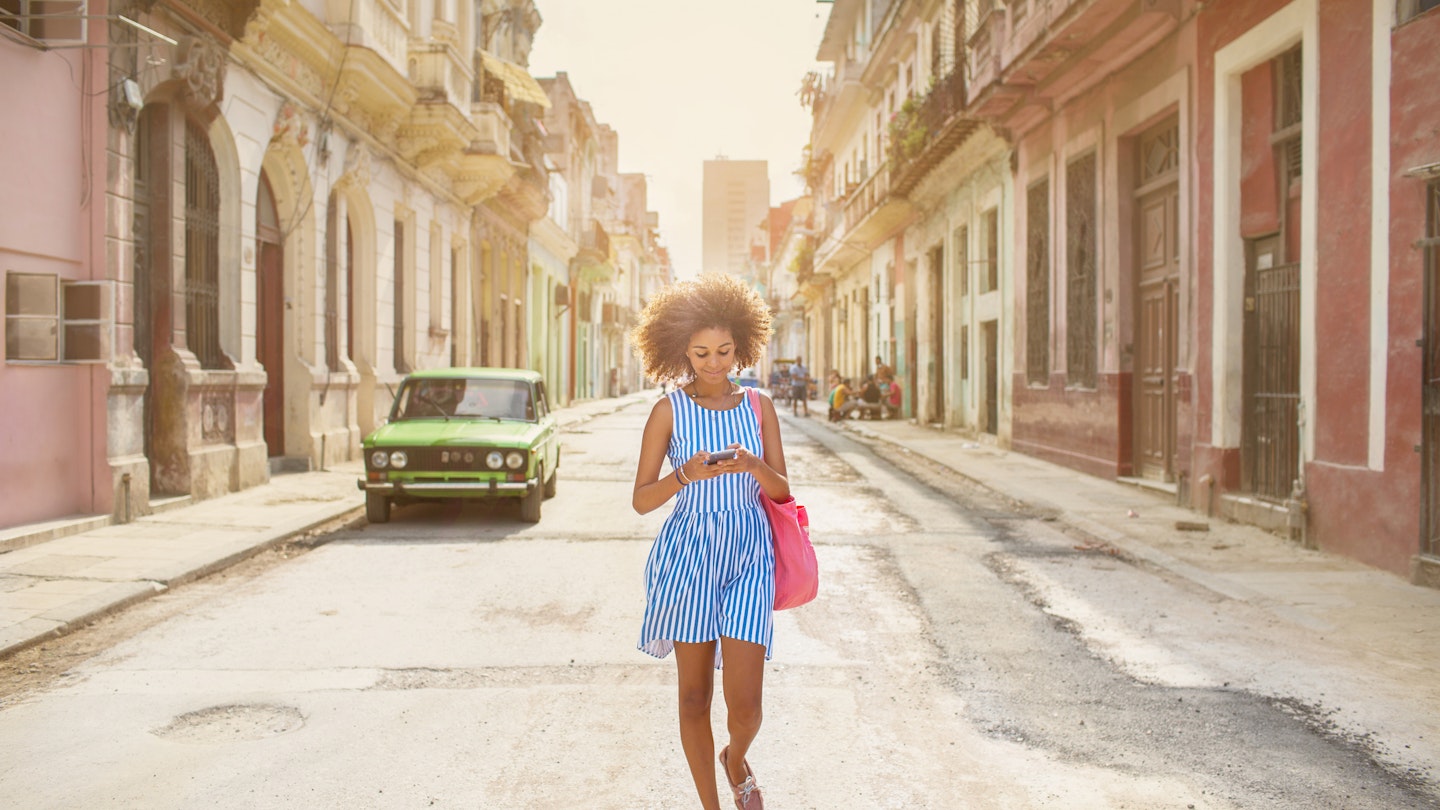
Make the most out of your time in Havana with this guide to planning, etiquette and safety © JulieanneBirch / Getty Images
For all its tropical charms, Havana isn’t the world’s most straightforward city for travelers.
A unique economic situation, top-heavy state bureaucracy and decades of isolation from its neighbor to the north (the USA) can place obstacles in the way of even simple activities.
But while travel in the Cuban capital can pitch you the occasional curveball, it’s rarely onerous and never dull. Ensure your trip to Havana goes smoothly with our top 20 things to know before you go.

1. Bring proof of insurance
Despite Cuba's extensive state healthcare system, visitors are required to have medical insurance to enter Cuba, and you’ll need to bring a digital or printed proof of your policy. Random checks are conducted at the airport; if you arrive without insurance, you’ll be asked to buy a Cuban policy at the airport.
2. Fill in an online immigration form in advance
With Cuba being one of the world's last Communist states, there's a bit of red tape to navigate . An online form called D’Viajeros containing immigration and health information must be completed by all travelers. You can digitally fill out the form up to 72 hours before you arrive in Cuba, so make this part of your pre-check-in preparations.
3. Different rules apply for US citizens
As a result of the strained political relationship between Cuba and the US, different rules apply for Americans traveling to Cuba. To visit, you'll have to apply for a travel license in one of 12 special categories.
There's no category for vacation, but visitors can often gain entry under the rather opaque “support for the Cuban people” category. Check out our detailed guide to the rules for US travelers .
4. Double-check you have a tourist card
To enter Cuba, all visitors need to present a completed Tourist Card. This travel document is usually available through your airline and is included in the price of many plane tickets, but check with your airline to make sure.
If your airline doesn't provide you with a Tourist Card, you can purchase one through a Cuban travel agency; costs range from US$50 to US$85. Twenty African and Asian countries require a formal visa to enter Cuba, so check the rules for your home country with your local Cuban representative before booking your tickets.

5. It's better to book accommodations in advance
Booking your accommodations before you arrive will not only guarantee you have a place to stay, it will also allow you to pay in advance and travel with less cash – a welcome situation considering the complicated rules for payments in Cuba.
Book a hotel through a reputable agency – Canada-based A Nash Travel has some excellent deals. If you’d prefer to stay in a casa particular (private homestay), use Lonely Planet’s listings to connect with owners directly via email or WhatsApp, or check out the options on Airbnb .
6. Wise up on the new money situation
The rules for making payments in Cuba have always been confusing, even to Cubans, and things have recently become even more confusing.
The country abolished the convertible Cuban peso (CUC) in January 2021 and took the US dollar out of circulation in June 2021, leading to massive inflation and the emergence of a rampant black market. The knock-on effect is a bewildering dual economy.
The official currency of Cuba is the Cuban peso (CUP), but foreign currencies are also widely accepted, especially by private businesses who need hard cash to buy non-rationed goods in special shops that allow purchases using Moneda Libremente Convertible (MLC) – basically, freely convertible currency.
State-run enterprises and banks use official exchange rates, but the superior services offered by private businesses generally reflect the more favorable black market exchange rates.
When buying something from a private business – be it a restaurant, casa particular or taxi service – it’s usually best to pay in a foreign currency. Always ask upfront what currencies are accepted and the exchange rate used for published peso prices.
The euro is the most interchangeable currency and the one preferred by Cubans. You can also use and exchange Canadian dollars and pounds sterling, but avoid US dollars.
When you first arrive, the best policy is to keep most of your money in a foreign currency and only change small amounts into pesos for incidental costs such as museum entry fees, concert tickets and tips. There are also plenty of things you can see and do for free in Havana.
7. Pack the right clothes to fit with your plans
The general dress code in Cuba is pretty casual. Jeans and a T-shirt or button-up shirt are standard attire for guys and girls, though some Cuban women wear colorful rumba dresses for special occasions.
The only real dress code is in cinemas, theaters, nightclubs and upscale restaurants, where male patrons are required to wear long trousers and shirts with sleeves or half-sleeves.
8. Learn Havana's colloquial greetings
Like most big cities, Havana has a rich seam of urban slang. The classic Habanero greeting between friends is qué bola, asere? – which means something akin to “how’s it going, man?” or “what’s up, buddy?”
The word asere is derived from a Nigerian Igbo salutation originally used by the Afro-Cuban Abakuá brotherhood.
The greeting caught on and has now become a form of address peculiar to Havana; don’t use it in Santiago de Cuba where they use the word compay instead.

9. Consider investing in some quality earplugs
With Havana's crowded houses, narrow streets and penchant for loud live music, this can be one noisy city – and the noise from the street and neighboring rooms and buildings can easily spill into the confines of your room.
If you have sensitive hearing, bring some earplugs or plan on staying in a quieter part of Havana. The suburban (eastern) half of Vedado and the diplomatic district of Miramar are less frenetic neighborhoods, with a few small hotels and plenty of casas particulares but, crucially, few nightspots.
10. The streets often have two names
Some of Havana’s streets go by two names: a contemporary one that is noted on maps and marked on street signs and a pre-revolutionary one that is still used widely by locals. This can be confusing if you set out on foot to explore Havana's diverse neighborhoods , especially when locals start giving out directions or addresses using the old nomenclature.
Some streets are always referred to by their old names – for example, Paseo de Martí, Havana’s main tree-lined avenue, is invariably called El Prado.
Similarly, Havana’s most famous road, the Avenida de Maceo, is universally known as the Malecón, while the main shopping thoroughfare in Centro Habana (Avenida de Italia) is cherished by all as Galiano.
11. Learn the unusual rules for waiting in Cuban lines
Cubans have to endure a lot of long waits in boring lines, so they’ve invented a way of queueing that doesn’t involve physically standing in line. In a Cuban line, you simply roll up at the bakery/clinic/visa office and yell out quien es último? – meaning “who’s last?” – to the assembled crowd.
All being well, someone in a quarter-mile vicinity will answer your polite inquiry with the word yo (me) and that person will be your yardstick. As long as they’re still around, feel free to go for a walk, sit in the lotus position or buy an ice cream. When they get called up, be on your toes – you’re next!
12. Ask questions more than once
Thanks to Cuba's top-heavy bureaucracy, answers to simple requests aren’t always straightforward and the information you receive may not even be correct, even from official sources. Probe politely and ask at least five different people before you make important decisions.
Can you pay for that taxi in euros? Has that casa particular you stayed in last year really closed forever? The truth is often somewhere in between the first and last answer you'll get.
13. Work out how to differentiate between state-run and private businesses
It’s not always easy for first-time visitors to tell the difference between state-run and private businesses in Cuba – both types have their pros and cons, but by going private, you’ll be putting money directly into the pockets of the Cuban people, and private businesses often offer better standards.
As far as restaurants go, if the food is good and the service friendly and engaging, you’re probably eating in a private dining spot.
When it comes to shops and galleries, places selling official merchandise such as cigars and rum are usually state-run, while more esoteric businesses selling art, secondhand books and unique crafts are generally private.
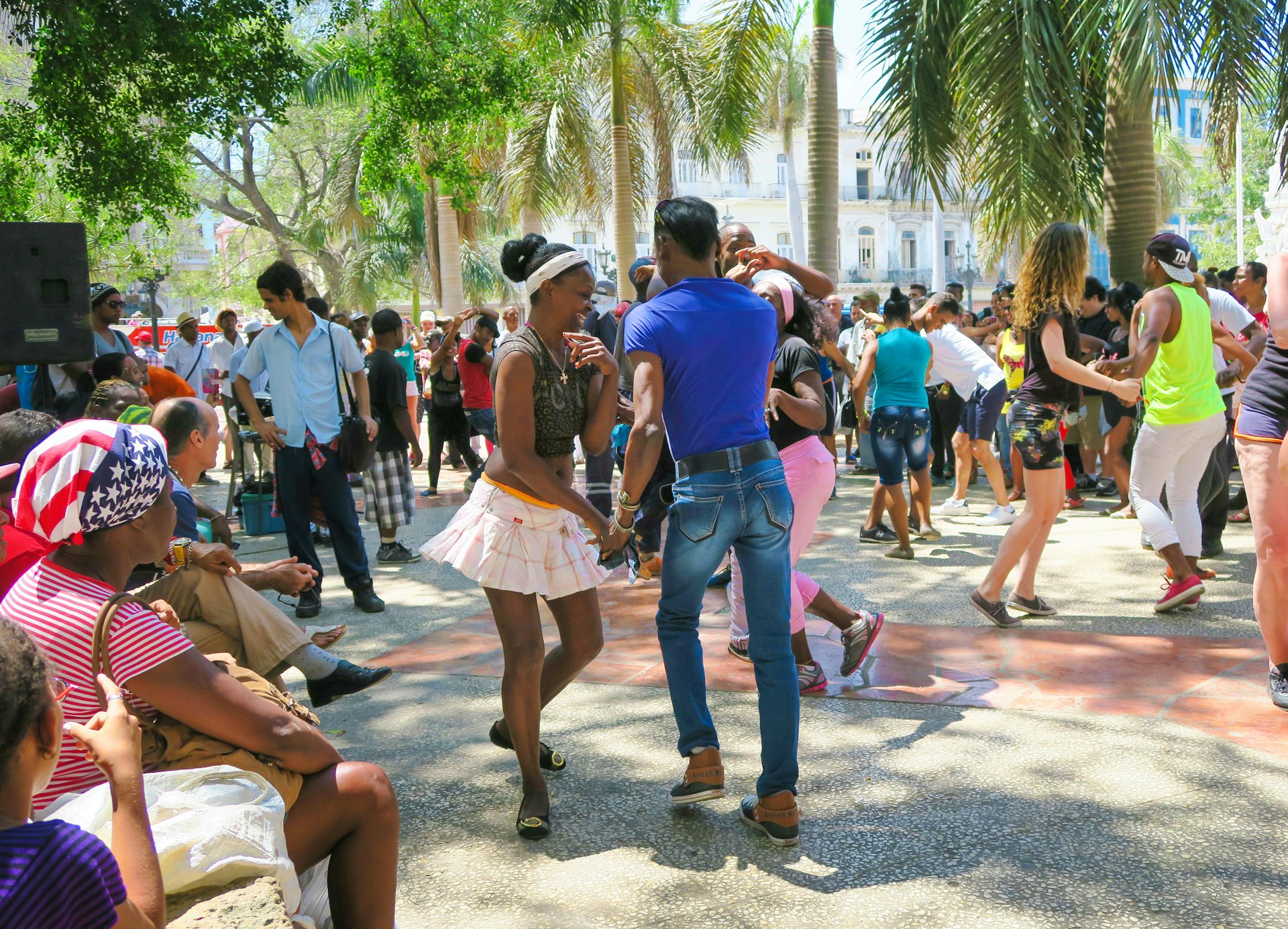
14. Keep valuables hidden to avoid attracting pickpockets
Havana is a safe city and mostly bereft of violent crime. Pickpocketing is more common but not rampant, and it’s mostly avoidable if you take a few basic precautions.
Wear a money belt, use safe boxes in hotel rooms and don’t flash your cash in public. Walking around with your wallet on display in your back trouser pockets is also a no-no.
15. Don’t change money in the street
Cuba’s widespread black market offers all sorts of options when it comes to changing money, but don’t be talked into exchanging your foreign notes with unlicensed traders on the street. You run the risk of receiving estafas (forged notes) and other kinds of swindles.
16. Bring your own medicines
On one level, Cuba has a good health system – Cuban medics invented and quickly distributed three different COVID-19 vaccines – but it is perennially short of imported pharmaceuticals. Bring all the medications you think you’ll need, including prescription medicines and pharmacy essentials such as ibuprofen and paracetamol.
If you’d like to donate some medicines to the people of Cuba, it is currently possible to bring in 10kg (22lb) of medical supplies tax-free, but you'll need to pack them in a separate bag.
Rather than giving out stuff out willy nilly, it’s better to leave your donations with a trusted Cuban contact to distribute (if you’re staying at a casa particular , ask the owner).

17. Avoid sketchy cigars and other scams
Scams perpetrated by jineteros (hustlers) are commonplace and are generally preceded by friendly chitchat followed by elaborate stories about super-cheap cigars or expert guiding services. While jineteros can be persistent, they are rarely threatening; a polite but firm no gracias usually does the trick of dissuading them.
As a general rule, cigars sold on the streets are usually factory cast-offs or counterfeits of real brands. If you want the real thing, buy your cigars in state-run shops such as the Casa del Habano chain.
Guides can be hit or miss, and those who over-enthusiastically try to talk you into using their services often fall into the latter camp. The best policy is to get in touch with the reputable folks at Free Walking Tour Havana .
18. Beware of sidewalk obstacles
Havana’s sidewalks are filled with hidden – and not so hidden – obstacles. Fruit carts, uneven paving stones, dog droppings and uncovered manholes are just some of the hazards that could ruin your idyllic evening stroll. If you tend to walk around daydreaming or staring at your phone back home, pay extra attention in Havana.
19. Pack toilet paper
The pandemic made the provision of hand sanitizer more common, but the same can’t be said for toilet paper. Public toilets rarely provide supplies so carry your own roll or gravitate to four- or five-star hotels if you’re caught short in the city.
20. Don’t drink the water
Havana's tap water probably won’t kill you, but it can easily give you a little queasiness or an upset stomach.
Bottled water is easy to find and cheap, but to cut down on your plastic use, consider buying a travel water bottle with a built-in filter before you travel and refill it at your accommodations (unfortunately, there aren’t any public water fountains around the city).
This article was first published April 2019 and updated January 2024
Explore related stories

Destination Practicalities
Jan 9, 2024 • 4 min read
Choose the best time for your visit to Cuba with this seasonal guide to lively festivals, top beach weather and budget prices.
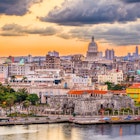
Jan 9, 2024 • 6 min read
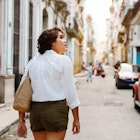
Jan 6, 2024 • 7 min read

Jan 5, 2024 • 8 min read

Jan 5, 2024 • 4 min read
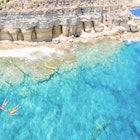
Nov 24, 2023 • 7 min read

Jan 6, 2023 • 7 min read

Jan 5, 2023 • 8 min read
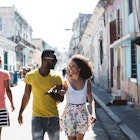
May 20, 2022 • 5 min read

Oct 5, 2020 • 15 min read
Havana, Cuba Travel Guide

Courtesy of Nikada | Getty Images

Why Go To Havana, Cuba
Cuba is full of life, and Havana is its center stage. Come rain or shine, hardship or prosperity, Havana is always beaming with buoyancy. Whether it's the luminous pastel-colored buildings that dot the centuries-old plazas of Old Havana , the fleet of vintage American cars cruising down its streets or the exuberant locals eager to offer you a cafe or dance, Havana's spirit is contagious and untamable. And with diplomatic ties undergoing historic renovations – some of the country's longstanding socialist policies are falling by the wayside – Habaneros are ready to show the world what they're capable of. Modern paladares , or privately owned restaurants, are opening left and right, cruise ships are docking and dilapidated landmarks are being cleaned up. Once pitied as a city stuck in time, Havana is finally on its way to tomorrow.
Politics aside, the best way to experience the life and style of Havana is to do as the Cubans do. Start each morning with a cafe Cubano or two, dine alfresco in one of Old Havana's historic plazas, get your feet wet at El Malecón , then dance with the crowds after the sun sets. Seek out mojitos, rum and fun under the sun in Playas de Este , and once you've gotten your fill of the local flavor, acquaint yourself with the country's greats at the Museum of Fine Arts . Don't forget to say goodbye to Hemingway 's hideaway on your way out.
Find Flight and Hotel Deals
Navigate forward to interact with the calendar and select a date. Press the question mark key to get the keyboard shortcuts for changing dates.
Navigate backward to interact with the calendar and select a date. Press the question mark key to get the keyboard shortcuts for changing dates.
- # 7 in Best Cheap Caribbean Vacations
Best of Havana, Cuba
Best hotels in havana, cuba.
- # 2 in Iberostar Parque Central
- # 3 in NH Collection Victoria La Habana
- # 4 in Hotel Grand Aston la Habana

Best Things to Do in Havana, Cuba
- # 1 in El Malecón
- # 2 in Old Havana (Habana Vieja)
- # 3 in Plaza Vieja

Havana, Cuba Travel Tips
Best months to visit.
The best time to visit Cuba is between January and February. The island's location in the Caribbean affords warm temperatures year-round, with the average lows in Havana dipping to 65 degrees. Because of its location, there are really only two seasons in Havana: wet and dry. The dry season runs through "winter" in Cuba, (November to April) while the wet season (May to October) overlaps with hurricane season, making the likelihood of precipitation very high. But hurricanes in Cuba aren't common and if a storm of any kind were to strike, it would likely happen during August or September. Festivals of all kinds occur year-round. If you want to see Havana at its most colorful, visit in August during Carnival. If you want to see the city at its most political, attend the International Workers' Day at Revolution Square in Havana in May, where a speech is made by the president annually.
Weather in Havana, Cuba
Data sourced from the National Climatic Data Center
What You Need to Know
Brush up on your Spanish Some top attractions , including the city's biggest museums, lack exhibits or signs with English translations. Know that the farther you venture away from Old Havana, the less English you're going to encounter.
One country, two currencies There are two official currencies in Cuba: the Cuban peso (CUP) and the Cuban convertible peso (CUC). Cuban convertible pesos are roughly equivalent to the U.S. dollar and mostly used by visiting tourists.
Bring cash Some major U.S. credit cards are accepted in Cuba, such as MasterCard and American Express, but if yours isn't, you'll have to bring enough cash to last your entire trip. Keep in mind there is a 10 percent fee to exchange U.S. currency for Cuban currency.
Don't insult Castro Speech insulting or offending public officials is against the law. Times are definitely changing, but it's best to keep your opinions to yourself.
How to Save Money in Havana, Cuba
Walk Many of the city's top attractions are, at most, a few miles apart from one another in Old Havana.
Eat off the beaten path Old Havana is undoubtedly the tourist area of the city, and likely the priciest. Venture to the nearby Vedado and Central Havana neighborhoods for discounted meals.
Stay with locals Cubans can now rent out their rooms or homes (known as casas particulares ) to visitors, and their rates are most likely lower than those charged at state-run hotels.
Culture & Customs
Although Cuba has faced corrupt leaders and strict regimes throughout the course of its history, Cuban people are as vibrant as they come. Much like the attractive architecture that line the streets of Havana, Cuban culture is both colorful and diverse, with previous occupants coming ashore from Africa, Spain, England and Asia, and other islands in the Caribbean.
Even though the country's socialist administration is slowly becoming more relaxed, Cubans are still behind on the times compared to the Western world. As of 2015, only 5 percent of Cubans have access to the internet at home, and before 2008, Cubans were not allowed to own computers. In 2013, Cubans were granted permission to sell and purchase new and used cars – the first time since the 1959 revolution. And prior to 2014, restaurants in Cuba were run entirely by the state. Along with North Korea, Coca-Cola cannot be bought or sold in Cuba thanks to a U.S. trade embargo.
Clearly, Cuba still has some catching up to do, so be patient during your travels. Unfortunately, getting in touch with folks back home isn't as easy as picking up a phone in your hotel room. If you're a Verizon customer, you can make calls, send texts and use data services with an International Travel plan. There are also Wi-Fi hot spots around the city, but service is contingent on how many people are using it, which is usually a lot.
Getting souvenirs in Cuba can be a bit of a headache, too. In 2015, MasterCard and American Express announced plans to allow use on the island. But credit cards aren't widely accepted yet, especially outside tourist areas. Call your bank before you depart to see if your card is compatible. If not, you'll have to withdraw enough cash in advance to sustain yourself throughout the duration of your stay. It's important to note that Americans can bring back up to $400 of souvenirs and $100 worth of cigars.
Cuba has two currencies: the Cuban peso (CUP) and the Cuban convertible peso (CUC). The difference between the two is that Cubans are paid and trade in Cuban pesos, while Cuban convertible pesos are dealt to tourists. Not only that, but convertible pesos are worth 25 times more than the Cuban peso. As a result, not all shops and restaurants are created equal if you're a tourist. If you venture outside of Havana, there is a likelihood that businesses won't be able to accept your convertible pesos. Although both currencies are legal across the country, Cubans may not have convertible pesos on hand for change. There's currently a 10 percent tax on United States dollars, so it's best to order other currencies, such as British pounds, euros or Canadian dollars to get a better deal.
Although there are no required vaccines to visit Cuba, the Centers for Disease Control and Prevention strongly recommends that travelers are updated on their routine vaccines and consider getting a hepatitis A and a typhoid shot for their trip. Both of these illnesses can be contracted through contaminated food and water, which is a likely occurrence in a developing country such as Cuba. Tourists should also drink only bottled water (even when brushing their teeth). For more information, visit the CDC's website .
What to Eat
The food scene in Cuba is unlike few others in the world, but not in the way you might think. Yes, there are staple dishes and notable places to eat and drink, but like much of the country, food is heavily socialized. Cuba has a tricky history with trade relations and, as a result, food must be rationed. As a visitor, your food won't be rationed, but try not to get disgruntled if meals listed on restaurant menus aren't available. And considering the average Cuban only makes 471 pesos (about $20) per month and is typically rationed five eggs during that same time period, don't be surprised if you find locals staring at you for not finishing your meal.
Moros y Cristianos, or congris , may be a phrase you hear at restaurants or see on menus, and no, it doesn't mean its literal translation (Moors and Christians). It's actually a combination of black beans and rice served with your choice of meat. Stews made with shredded beef and vegetables ( ropa vieja ) are also a popular dish to make in the home, as is suckling pig. Fried plantains are a must-try snack, along with Cuban coffee. Cuban coffee is espresso mixed with sugar while brewing. It is so strong that it is served in tiny cups, so don't expect to find anything resembling a Frappuccino here.
There are two types of restaurants: state-run restaurants and paladares , or private establishments. State-run restaurants primarily cater to Cubans and hold a reputation for offering less than stellar food and service. Paladares , on the other hand, are privately owned eateries housed in residences that tend to offer better food and service. Popular paladares include the French-themed Le Chansonnier , San Cristóbal, which serves Cuban-Creole fusion food, and Atelier. Another iconic eatery lauded by both travel experts and visitors is La Guarida , which was featured in the Oscar-nominated Cuban film, "Fresa y chocolate" ("Strawberry and Chocolate"). The former movie set became so popular that its owner turned it into a restaurant.
As the inventor of the mojito and the daiquiri, not to mention world-class rum purveyors, Cuba – especially Havana – thrives come nighttime. If you're a Hemingway fan, stop by El Floridita, home to the writer's favorite daiquiri. If you want more than just a bar, try Fabrica de Arte Cubano, which features multiple bars and has space for an art gallery, a dance club and a concert hall. For strictly dancing, hit up La Casa de la Música in Centro Habana (there are two locations in Havana – stick to the central one). Tropicana is a name that might come up in your research, too. It's not a club, but rather a historic Las Vegas-style cabaret show. No matter what path you choose, make sure to end your night at El Malecón .
Getting Around Havana, Cuba
The best way to get around Havana is on foot. Many of Havana's most popular attractions , including Habana Vieja, El Malecón and Museo de la Revolución, are less than a mile away from each other. Taxis are both plentiful and a great means of transportation, and one tourists will likely be unable to resist. Those vintage American automobiles you've likely seen in pictures and videos of Havana are actually taxis, and open to tourists to use. Local buses are best left to those fluent in Spanish and although hitchhiking is a perfectly legal and a popular means of getting around the island for Cubans, travel experts strongly advise leaving that to the locals. The best way to get from José Martí International Airport (HAV) to the city's center ( Old Havana – located about 15 miles north) is by taxi, which can be found outside the airport terminal.
There are direct flights from the U.S. to Cuba. Alaska Airlines, Delta, Frontier, Southwest, Spirit and United fly to Havana, though most of the cities that service Havana flights are in Florida. At present, only one American cruise line, Carnival, is authorized to conduct cruises to Cuba under the people-to-people travel category. And of all Carnival's cruise ships, Fathom is the only one allowed to sail to Cuba, departing from Miami. Royal Caribbean Cruises and Norwegian Cruise Line Holdings, including its three brands Norwegian, Oceania Cruises and Regent Seven Seas Cruises, have recently gotten approval from the Cuban government to conduct cruises from the USA, with itineraries scheduled to start running in April and May 2017.
Entry & Exit Requirements
At this time, U.S. citizens are not allowed to travel as tourists to Cuba by law. However, there are exceptions. There are currently 12 categories of travel that U.S. citizens must qualify for to obtain permission by the U.S. government to visit Cuba, including educational activities, humanitarian projects and people-to-people travel – the most common type of visa attained by Americans.
For those authorized, travelers must have a valid U.S. passport and may be required to obtain a visa from the Cuban government. For more information on exit and entry requirements, visit the State Department's website .
With diplomatic ties resuming between the U.S. and Cuba, visitors are coming to Havana in droves, and locals are embracing it.
Explore More of Havana, Cuba

Things To Do
Best hotels.

You might also like

Puerto Rico
# 3 in Best Cheap Destination Wedding Locations

# 6 in Best East Coast Vacation Spots

Buenos Aires
# 8 in Best Places to Visit in October 2024
If you make a purchase from our site, we may earn a commission. This does not affect the quality or independence of our editorial content.
Recommended
The 50 Best Hotels in the USA 2024
Christina Maggitas February 6, 2024

The 32 Most Famous Landmarks in the World
Gwen Pratesi|Timothy J. Forster February 1, 2024

9 Top All-Inclusive Resorts in Florida for 2024
Gwen Pratesi|Amanda Norcross January 5, 2024

24 Top All-Inclusive Resorts in the U.S. for 2024
Erin Evans January 4, 2024

26 Top Adults-Only All-Inclusive Resorts for 2024
Zach Watson December 28, 2023

Solo Vacations: The 36 Best Places to Travel Alone in 2024
Lyn Mettler|Erin Vasta December 22, 2023

26 Cheap Beach Vacations for Travelers on a Budget
Kyle McCarthy|Sharael Kolberg December 4, 2023

The 50 Most Beautiful White Sand Beaches in the World
Holly Johnson December 1, 2023

The 26 Best Zoos in the U.S.
Rachael Hood November 16, 2023

44 Cheap Tropical Vacations That Feel Expensive
Holly Johnson|Alissa Grisler November 10, 2023

Explore Havana

Plan Your Trip to Havana: Best of Havana Tourism
Essential havana.

Trending in the forums
Havana Is Great For
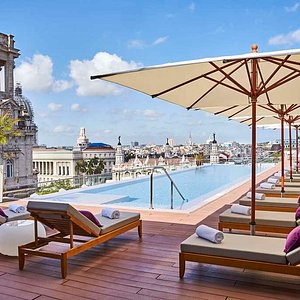
Eat & drink

Art & history
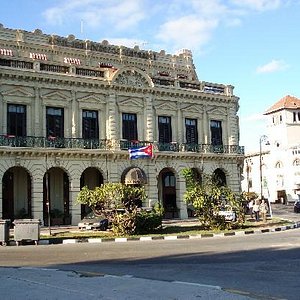
Historic sites

Explore Havana

Plan Your Havana Holiday: Best of Havana
Essential havana.

Trending in the forums
Havana Is Great For

Eat & drink

Art & history

Historic sites

Havana Travel Guide
Book your individual trip , stress-free with local travel experts
- roughguides.com
- Central America & the Caribbean
- Travel guide
- Itineraries
- Local Experts
- Travel Advice
- Accommodation
Havana is an enchanting and captivating city, with the twists and turns of its compelling history and rich culture laid bare in the surprising diversity of its architecture and kaleidoscope of citizens. Nowhere is there uniformity, with the hotchpotch of buildings and people presenting a different set of stop-and-stare images on every street. Policemen on military service lean against Soviet-era Brutalist office blocks; adherents of Santería, dressed all in white, stroll past Neo-Gothic churches; queues of smart, elderly socialites form outside Art Deco theatres; and taxi drivers in baseball caps tout rides in their fifty-year-old Buicks and Chevrolets in front of Neoclassical shop fronts. In the centre especially, almost every street seems to have an intriguing story to tell, whether one of colonial grandeur, bygone glamour, economic hardship or revolutionary change – and sometimes all of these, wrapped up in just one block.
Brief history of Havana
Where to go in havana, what to expect, neighbourhoods, accommodation in havana, eating in havana, drinking in havana, nightlife and entertainment in havana, shopping in havana, sports and outdoor activities in havana, parque morro-cabaña, centro habana, miramar and the western suburbs, around havana, tailor-made travel itineraries for cuba, created by local experts.

15 days / from 2961 USD
Cuba - Family, Beach, and Culture
Enjoy a 2-week family adventure visiting highlights and hidden gems of Cuba. Marvel at the colonial architecture in Havana, enjoy a ride in a Classic Car, explore the forests close to Trinidad, and relax on white sandy beaches of Cayo Levisa - this trip packs it all into one itinerary.

5 days / from 1007 USD
A moderately challenging cycling holiday through Cuban countryside visiting the tobacco fields of Viñales Valley and a pristine Caribbean beach in Cayo Jutias.

13 days / from 3510 USD
Western and Central Cuba by E-bike
Combine a leisurely activity with an insight into some of Cuba’s most fascinating cultural highlights on this new e-biking tour of Western and Central Cuba. Explore the tobacco region of Viñales, cycle along the Bay of Pigs and relax on the fine sandy beaches of Cayo Las Brujas.
Tailor-made trips for Cuba
Havana’s success and riches were founded on the strength and position of its harbour – the largest natural port in the Caribbean. However, the original San Cristóbal de la Habana settlement, established on July 25, 1515, St Christopher’s Day, was actually founded at modern-day Batabanó, on the south coast of what is now Mayabeque province. It wasn’t until November 25, 1519, that the city was relocated to the banks of the large bay known as the Bahía de la Habana.
Port, bridge and gateway
The early settlement began to ripple out into what is now Habana Vieja , with the first streets established down on the waterfront between the present-day Plaza de Armas and Plaza de San Francisco. However, it was with the discovery of a deep, navigable channel through the treacherous shallow waters between Cuba and the Bahamas that Havana really took off as a major city, becoming a bridge between Spain and the New World thanks to its strategic location on the newly established trade routes.
As the Spanish conquistadors plundered the treasures of the Americas, Havana became the meeting point for the Spanish fleet on its way back across the Atlantic. For several months of the year, ships returning from all over the Americas laden with precious cargoes would slowly gather at the port until a force strong enough to deter possible pirate attacks in the Caribbean had been assembled. An infrastructure of brothels, inns and gambling houses sprang up to cater for the seamen, and the port itself became a target for frequent attacks by buccaneers.
Fortification and free trade
In 1558, after consolidating shipping operations by making Havana the only Cuban port authorized to engage in commerce, Spain started a long period of fortification with the construction of the first stone fort in the Americas, the impressive Castillo de la Real Fuerza. Work started on the Castillo de San Salvador de la Punta and the formidable Castillo de Los Tres Reyes del Morro in 1589 and was finally completed in 1630. Three years later a protective wall began to be built around the city, and was completed in 1740.
Assaults on the city persisted, however, and in 1762 Havana fell to the British. The free trade that the port enjoyed during its brief eleven months of occupation – the British swapped Havana for Florida – kick-started the island’s sugar trade; previously restricted to supplying Spain, it was now open to the rest of the world. Spain wisely kept British trade policies intact and the consequential influx of wealthy Spanish sugar families propelled Havana into a new age of affluence.
The building booms
The nineteenth century was a period of growth, when some of the most beautiful buildings around Habana Vieja were constructed and the city enjoyed a new-found elegance. At the same time, crime and political corruption were reaching new heights, causing many of the new bourgeoisie to abandon the old city to the poor and to start colonizing what is now Vedado. By the 1860s the framework of the new suburbs stretching west and south was in place.
In 1902, after the Wars of Independence, North American influence and money flowed into the city, and the first half of the twentieth century saw tower blocks, hotels and glorious Art Deco palaces like the Edificio Bacardí built as the tourist industry boomed. Gambling flourished, run by American gangsters like Meyer Lansky, who aimed to turn Havana into a Caribbean Las Vegas.
Equality, decay and rebirth
The Revolution put an abrupt end to all this decadence, and throughout the 1960s the new regime cleaned the streets of crime and prostitution, laying the basis for a socialist capital. Fine houses, abandoned by owners fleeing to the US, were left in the hands of servants, and previously exclusive neighbourhoods changed face overnight. With the emphasis on improving conditions in the countryside, city development was haphazard and the post-Revolution years saw many fine buildings crumble while residential overcrowding increased, prompting Fidel Castro to take action. Happily, since the 1990s there have been steady improvements, with redevelopment work recapturing some of the former glory, especially in the worst-affected areas of Habana Vieja.
Today there is a growing prosperity in Havana, evident from fancy restaurants full of locals, increasingly well-appointed houses, and new cars on the roads. Although many of its citizens still live in poverty on a minimum of resources, new housing developments springing up on the city’s outskirts and improvements in travel infrastructure speak of important social investment and the efforts made to address the city’s increasing inequalities.
If you’re wondering where to visit in Cuba, it’s fair to say no trip would be complete without a visit to the potent capital, Havana. A unique and personable metropolis characterized by a small-town atmosphere, its time-warped colonial core, Habana Vieja, is crammed with architectural splendours, some laced with Moorish traces and dating as far back as the sixteenth century. Elsewhere there are handsome streets unspoiled by tawdry multinational chain stores and restaurants. Urban development here has been undertaken sensitively, with the city retaining many of its colonial mansions and numerous 1950s hallmarks.
Best places to go in Havana
- Plaza Vieja This has become the most animated and alluring square in Old Havana, alive with the chatter and clatter of a great set of cafés and restaurants.
- Museo Nacional de Bellas Artes The best and largest art collection in Cuba, split between a lovely, bright Art Deco building and an austere Neoclassical one.
- Parque Morro-Cabaña It’s well worth the effort of crossing the bay to explore the nooks and crannies of this easily overlooked fortress complex.
Hotel Nacional This luxurious twin-towered hotel still embodies 1930s Havana glamour. A perfect setting for a mojito.
- Fábrica de Arte Cubano Nowhere quite symbolizes the direction in which Havana’s contemporary arts and culture is moving like this immense art centre and nightclub.
- El Cocinero With a new-wave Cuban menu assembled with flair, El Cocinero is redefining eating out in Havana.
- Gran Teatro Enjoy the world-renowned Cuban National Ballet in this stunningly restored cultural cathedral.
The past and the present are closely interwoven all over this sprawling metropolis, with tenement buildings moulded from the mansions of imperial counts, 1950s department store signs hanging over entrances to community centres and government agencies occupying eighteenth-century convents. An infectious vitality pervades every neighbourhood, as life in Havana unfolds unselfconsciously and in plain view: front doors are left open, washing is hung out on balconies, domino players sit at tables on the kerb, conversations are shouted between buildings and families watch TV in exposed street-side living rooms. Even in the most touristy parts of the city, which double up as residential neighbourhoods, the locals make their presence felt.
Havana’s diverse districts mark distinct eras in the capital’s evolution. What was once contained within seventeenth-century city walls now forms the most captivating section of harbourside Habana Vieja , the old city, and the capital’s tourist centre. Soldered on to Habana Vieja is gritty, lively Centro Habana, often bypassed by visitors on their way to more tourist-friendly parts of town but home to the most striking and idiosyncratic section of Havana’s oceanfront promenade, the Malecón. Sharing the Malecón with Centro Habana is Vedado, heart of the city borough of Plaza, its attractive, leafy, open plan neighbourhoods blessed with most of the city’s abundant theatres, cabarets, nightclubs and cinemas. From here you could walk the couple of kilometres to the vast and famous Plaza de la Revolución, with giant monuments to two icons of the Cuban struggle for independence, Che Guevara and José Martí. Beyond Vedado to the west, on the other side of the Río Almendares, Miramar ushers in another change in the urban landscape. Modelled on mid-twentieth-century Miami, this part of the city comes into its own at night, with some of Havana’s most sophisticated restaurants and best music venues scattered around the leafy streets.
Accommodation in Havana is abundant and, as in the rest of Cuba, splits into two distinct categories, hotels and casas particulares (private houses). From sumptuous boutique-style houses to more bijou apartment rooms, the city boasts a fantastically broad range of casas particulares which, broadly speaking, grow more luxurious the further west you venture. All areas, however, possess a significant number of casas that are far classier than the cheapest hotels, and it’s a mistake to assume that a stay in a house means a compromise in comfort. And as there are only one or two hotels with rooms for less than $50CUC a night, casas particulares have practically cornered the budget market, which they do with such panache and comfort that there really is no need to seek out budget hotels at all. On the other hand, if you want a pool, international food and all the mod cons, very few houses can compete with the classier hotels.
Many of Havana’s most glorious hotels, especially those in Vedado, were built in the 1950s with a casino attached and the funds for their construction put up by members of the American Mafia, who were busy building an empire in the Cuban capital. With a booming tourist economy, a shortage of top class hotel rooms and American mobsters queuing up to take advantage of lax Cuban gambling laws, Cuban President Fulgencio Batista, in cahoots with the Mob, passed Hotel Law 2074 in 1955. This provided tax exemptions to any hotel providing tourist accommodation and guaranteed government financing and a gaming licence to anyone willing to invest $1 million or more in hotel construction, or $200,000 for the building of a nightclub. An unprecedented boom in hotel and casino construction followed as the Havana Mob expanded its portfolio, which already included the Hotel Nacional, the Sevilla Biltmore and the Hotel Comodoro, establishing landmark hotels like the Habana Hilton, the largest hotel in Havana when it opened in 1958, renamed the Habana Libre after the Revolution; the seafront Hotel Deauville, built in 1957 by Santo Trafficante, the Florida crime boss and long-time investor in Cuba; the luxurious Hotel Riviera, inaugurated in late 1957, having been conceived and funded by Meyer Lansky, the Don of the Havana-based mob; and the Capri, which also opened in 1957 and where the Mob installed the Hollywood tough-guy actor George Raft as a meeter-and-greeter, the personification of the hotel and casino industry in 1950s Havana, with its mixture of celebrity glamour and gangster backing.
Havana hassle
While Havana puts the hotels, restaurants, shops and clubs of all the other Cuban cities to shame, hanging around outside most of these places, and patrolling the streets in between them, are legions of jineteros – street hustlers and opportunists. The government now takes the high levels of tourist harassment here very seriously, posting policemen all over Habana Vieja and the streets around the Habana Libre hotel, areas where jineterismo has traditionally been most concentrated. Even so, many foreign visitors are still surprised by what can seem like an onslaught of touts peddling anything from cigars and taxi rides to a place to stay and a young woman to stay with.
Habana Vieja, the old town, is not only a magnet for jineteros but is also the bag-snatching centre of the city, with an increasing number of petty thieves working the streets, so take the usual precautions. Even at night, however, there is rarely any violent crime.
Eating out in Havana is on the up. A new wave of paladars has given the dining scene a lease of life, particularly in Centro Habana and Habana Vieja , where standards have long lagged behind those set in Vedado and Miramar. Traditional Cuban food does still dominate, but paladar owners are becoming more ambitious and innovative, creating alternative menus and designing memorable, eye-catching interiors. The best state restaurants and many of the superior paladars are in Vedado and Miramar, still the home of the city’s finest dining and where you are more likely to have a truly unforgettable meal out. The capital’s cafés are often indistinguishable from restaurants, serving meals as much as drinks, and there are also a few places more akin to coffee shops, worth searching out if you are looking for a relaxing, hassle-free snack or drink.
There are surprisingly few straight-up bars in Havana. Most drinking venues are part bar, part café, offering rum, beer, coffee and tea in equal measure, while many also serve light meals. They are invariably small, single-room venues and many in Habana Vieja feature live music. A bar crawl in Havana can involve a lot of walking, as there are very few areas with a concentrated buzz – it often makes sense to find a likeable venue and stay there. Obispo in Habana Vieja can lay claim to the biggest concentration of drinking spots – and of jineteros – while the nearby Plaza de la Catedral district is also quite lively at night. In Vedado, the Habana Libre hotel is the best starting point for evening drinking, and the Riviera hotel is another good option, while the La Rampa area has a good clutch of bars and clubs that heat up after 11pm. It’s also worth checking out theatre bars and gardens in Vedado for atmospheric and discerning tipples even if you haven’t attended a performance. However, for sheer joie de vivre you can’t beat taking some beers or a bottle of rum down to the Malecón and mingling with the crowds beneath the stars.
Havana’s nightlife doesn’t jump out at you, but instead works its magic from isolated corners all over the city, in secluded clubs, hidden courtyards, theatre basements and on hotel rooftops. Spontaneous nights out are difficult as there’s no single area with much of a buzz and the headline venues are widely dispersed. The only way to find out who is playing, and where, are the fliers (usually cheap photocopies) at Infotur offices and in hotel lobbies, promoting club nights and live musical. As schedules are so unreliable it’s wise to call the venue itself.
Havana stands out, refreshingly for some, as one of the few capitals in the West whose centre is not dominated by a shopping district – Obispo, in Habana Vieja, is as close as it gets. Elsewhere, although new malls and boutiques are mushrooming steadily around the city, the general standard of merchandise is quite low, with rum, cigars, coffee and crafts the exceptions. For everything else the large hotels and the Artex and Caracol state chain stores have some of the best-quality products. Standard opening hours are Monday to Saturday 9am to 6pm; only a tiny minority of shops stays open after 7pm. Some shops are open all Sunday but most either don’t open or close at lunchtime. Havana still has a significant number of national-peso shops, especially in Centro Habana, mostly half-empty and stocking used, old or shoddy goods – the fading signs and barely stocked outlets along Avenida de Italia stand as testament to a bygone era.
You only need to spend a few hours wandering the streets of any part of the capital to appreciate the prominent role that sport plays in the lives of Habaneros. Fierce arguments strike off every evening on basketball courts all over the city, and you’ll rarely see an open space, at any time of the day, not hosting a game of baseball or football. On a professional level, Havana is the finest place for live sport in Cuba, with teams in all the national leagues and a number of large stadia. Entrance to most sports arenas is only $1–2CUP and booking in advance is unnecessary and rarely possible.
While many visitors don’t make it to the Parque Morro-Cabaña, across the bay from Habana Vieja, those who do are rewarded by the uncrowded sights of an impressive, sprawling complex of fortifications that, along with the two fortresses in Habana Vieja, comprised the city’s colonial defence system. A stalwart part of both the Havana skyline and timeline, the two fortresses here dominate the view across the channel into the harbour, and mark key events and periods in the city’s history. Beyond the forts, further into the bay, a gargantuan statue of Christ, El Cristo de La Habana, was one of the last public works completed before Cuba was taken over by Fidel Castro and his revolutionary – and subsequently atheist – government.
El Cristo de La Habana
On the hill above the picturesque village of Casablanca, 1km southeast from the entrance to the Fortaleza San Carlos de la Cabaña, is El Cristo de La Habana, a17m-high Christ figure commissioned by Marta Batista, wife of the dictator, and sculpted from Italian marble (blessed by Catholic Pope Pius XII prior to being shipped to Cuba) by Jilma Madera in 1958. Although impressive close-up, where you can ponder the massive scale of the sandaled feet and the perfectly sculpted hands, said to weigh a tonne each, there’s precious little to do on the hillside other than admire the views over Havana. The best perspective of the statue itself is from Habana Vieja, especially in the evening, when you can gaze across the bay and enjoy its floodlit grandeur.
The sculpture provides a warm welcome, as it sits at the entrance to Old Carenas port and is the first thing sailors see when entering the city. The figure looks over Havana and appears to be blessing the city however locals often joke that the El Cristo de La Habana Christ statue is gestured to depict a cigar in one hand and a mojito in the other, to honour popular Cuban culture.
Construction of El Cristo de La Habana
The construction of the El Cristo de La Habana took several years to complete and was finally finalised on December 24th 1958. Just 15 days after its unauguration, the famous Fidel Castro entered and dominated Havana during the Cuban Revolution. Madera did not have a particular figure in mind whilst sculpting but was rather inspired by her own ideal of masculine beauty. Note the oblique eyes and voluminous lips, features that are very much associated with the racial miscegenation of the island.
Two years after it's completion, a lightning bolt struck the head of the statue causing significant damaged and the Cuban sculptor, Jilma Madera, was called to duty once again to restore the Christ figure to it's former glory.
Over the years, the statue had suffered general deterioration due to exposure before a 10 month restoriation programme, concluded in January 2013, brought it back to life.
Reaching El Cristo de La Habana
The El Cristo de La Habana can be reached by road, by an open top vintage car in typical havana style or by an ordinary car, taxi or bus. There is also the option to arrive in the way of a pleasant short ferry ride, a delight to gaze upon the sparkling water. Once at the site, an uphill 10 minute walk is required to reach the actual statue and the beautiful views at the top. From the view point, you can spot the Dome of the National Capitol Building and the Baroque architecture that is the Cathedral of Havana.
The statue itself is fascinating, as our the views over Havana, at any time of the day. It is appealing to visit at night, to see the Christ figure lit up in illuminating white lights and looking rather glorified, and for the view of Havana to be a haven of shining lights simmering against the water. To view the statue from afar and to see it standing tall and proud, the best view is from the Old Town.
The Hershey train from Havana
Aside from the Cristo de La Habana statue, the only other diversion in Casablanca is the terminus of the Hershey train, one end of Cuba’s only electric train service (the other is in the provincial capital of Matanzas ). Regularly used by Cubans travelling to stations in Mayabeque and Matanzas, the line is not an official tourist attraction, but the loveable little trains, built in the 1940s, are a great way to take a slow, relaxing ride through picturesque landscape to Canasí, Jibacoa or all the way to the city of Matanzas, which takes about three hours and costs just under $3CUC.
For many visitors the crumbling buildings and bustling streets of Centro Habana, crammed between the hotel districts of Habana Vieja and Vedado, are glimpsed only through a taxi window en route to the city’s more tourist-friendly areas. Yet this no-frills quarter has a character all of its own, as illuminating and fascinating as anywhere in the capital. Its late eighteenth- and nineteenth-century neighbourhoods throb with life, particularly around San Rafael and Avenida de Italia, renowned shopping streets where many of the most glamorous department stores were located before the Revolution, when the Avenida de Italia was known as Galiano, the name most locals still use. Near the southern end of Galiano is El Barrio Chino, Havana’s Chinatown, small by international standards but still a busy focal point for the area.
For the most part, Centro Habana is not that attractive on the surface. Full of broken sewage systems, potholed roads and piles of rubbish, it isn’t for the faint-hearted, and hasn’t yet enjoyed the degree of investment and rejuvenation lavished on Habana Vieja. However, the famous Malecón seafront promenade is starting to regain its former glory, with many of its buildings given face-lifts in recent years, and there’s nowhere in the city that feels more alive. Centro Habana’s streets buzz with people and non-stop noise, ringing with an orchestra of street vendors shouting their wares, bicitaxis blasting their sound systems, schoolchildren’s screams and doorstep politics.
El Barrio Chino
About a block inside Centro Habana from Habana Vieja’s western border, the grand entrance to El Barrio Chino, Havana’s version of Chinatown, is likely to confuse most visitors, as it’s placed three blocks from any visibly ethnic change in the neighbourhood. The entrance, a rectangular concrete arch with a pagoda-inspired roof, is south of the Capitolio Nacional, on the intersection of Amistad and Dragones, and marks the beginning of the ten or so square blocks which, at the start of the twentieth century, were home to some ten thousand Chinese immigrants. Today only a tiny proportion of El Barrio Chino is discernibly any more Chinese than the rest of Havana, principally the small triangle of busy streets comprising Cuchillo, Zanja and San Nicolás – collectively known as the Cuchillo de Zanja – three blocks west of the arched entrance. Indeed, the first thing you are likely to notice about El Barrio Chino is a distinct absence of Chinese people, the once significant immigrant population having long since dissolved into the racial melting pot. The Cuchillo de Zanja itself does, however, feature its own tightly packed little backstreet food market, composed mostly of simple fruit and vegetable stalls. It’s lined with eccentric-looking restaurants, many still charging in national pesos, where the curious and unique mixture of tastes and styles is as much Cuban as Asian. Among the better restaurants here is Tien Tan.
Store detective
During the 1950s, Havana’s most prestigious shopping destination was the Centro Habana intersection where San Rafael and Neptuno converged with Galiano. At its heart, on the corner of San Rafael and Galiano, stood El Encanto, the most renowned of the department stores, occupying an entire block and boasting the patronage of Hollywood stars like Lana Turner, John Wayne and Errol Flynn. In 1961 the store, which by this time had been nationalized, was burned to the ground, the result of a bomb attack in the tumultuous early years of the Revolution.
Five decades later and general neglect coupled with the effects of the US trade blockade has left the area sorely dilapidated, and instead of swanky shopfronts, it’s now peppered with a selection of artless hard-currency stores and murkily lit peso shops. Rather than unearthing great retail finds, the real pleasure here is spotting the vestiges of a glamorous past in the old shop signs, marble pavements, faded interiors and elaborate tiled frontages that dazzle amid the ruins. In particular, look out for the Hotpoint mosaic on San Rafael esq. Industria; and the stylish flourish of lettering spelling out Fin de Siglo along the building on the corner of Aguila and San Rafael, once a fancy five-floor department store featuring a hair salon decorated with floor-to-ceiling mirrors, now the scene of a huge, jam–packed ground-floor market selling secondhand clothing and other goods; and the Flogar logo imprinted on the dusty glass frontage of the large, half-empty store at Galiano no.42, where once mannequins displayed the latest fashions in the Macy’s-style window displays.
The only department store to have been fully redeveloped since the Revolution is La Epoca, reborn a little less than a half-a-century after it first moved into its home on the corner of Galiano and Neptuno in 1954, becoming the third largest department store in Havana at the time, employing over four hundred staff. Locals flock here today to buy counterfeit brand clothing, electrical goods and homewares, though the current design of its five floors owes more to modern supermarkets than the chic interiors of yesteryear.
The Malecón
The most picturesque way to reach Vedado from Centro Habana or Habana Vieja is to stroll down the famous Malecón sea wall, which snakes west along the coastline from La Punta for about 4km. It’s the city’s defining image, and ambling along its length, drinking in the panoramic views, is an essential part of the Havana experience. But don’t expect to stroll in solitude: the Malecón is the capital’s front room and you won’t be on it for long before someone strikes up a conversation. People head here for free entertainment, particularly at night when it fills up with guitar-strumming musicians, vendors offering cones of fresh-roasted nuts, and star-gazing couples, young and old alike. In recent years it’s grown in popularity for the city’s expanding clique of gays and transvestites, who put its sinuous length to good effect as a nightly catwalk and meeting place, especially the area close to the Hotel Nacional in Vedado. At weekends and in the daytime it’s crowded with children (intent on hurling themselves into the churning Atlantic), while wide-eyed tourists and anglers climb down onto the rocks below.
The Centro Habana section, referred to on street signs as the Malecón tradicional, has been undergoing tortoise-paced renovations for over two decades now. Lined with colourful neo-colonial buildings, it’s the oldest, most distinct and characterful section in the city, though – potholed and sea-beaten – it looks much older than its hundred or so years. Construction began in 1901, after nearly a decade of planning, and each decade saw another chunk of wall erected until, in 1950, it finally reached the Río Almendares. Today there are a few places worth stopping in for eating and drinking with enjoyable sea views.
Havana from a height
With its architecturally distinct neighbourhoods dating from separate eras, Havana looks stunning from above, but since the city is laid out on relatively flat land, you have to go to the southern outskirts or over to the eastern side of the bay for hills high enough to afford a decent view. There are, however, numerous tall buildings open to the public dotted around the city proper, with fabulous vistas across the boroughs. The best of these are detailed below.
Cámara Oscura
Catch a view of Havana from the roof terrace or get a “guided tour” of parts of the city through a telescopic lens.
Edificio FOCSA
The restaurant at the top of the city’s tallest apartment building offers a winning combination of food and great views.
Habana Libre
You’ll have to eat at the restaurant or pay the nightclub’s entrance fee to get up to the top of this famous Havana hotel – but either way, it’s worth it.
Iglesia de San Francisco de Asís
Climb the wooden staircase to the top of the church bell tower and enjoy a great perspective of the old city.
Memorial José Martí
An obligatory part of the tourist circuit, the memorial offers the best vantage point for bird’s-eye views of Havana, reaching as far as the western suburbs.
Saratoga and Parque Central hotels
The most blissful way to view the city from above is by lounging in one of these two rooftop hotel swimming pools.
Torre del Oro Roof Garden, Hotel Sevilla
One of the swankiest restaurants in the city, in a cavernous balustraded hall with marble floors and towering windows – the food is only average, but the views across the city are superb.
The cultural heart of the city, graceful Vedado draws the crowds with its palatial hotels, contemporary art galleries, exciting (and sometimes incomprehensible) theatre productions and live music concerts, not to mention its glut of restaurants, bars and nightspots. Loosely defined as the area running west of Calzada de Infanta up to the Río Almendares, Vedado is less ramshackle than other parts of the city. Tall 1950s buildings and battered hotrods parked outside glass-fronted stores lend the downtown area a strongly North American air, contrasted with the classical ambience of nineteenth-century mansions; the general impression is of an incompletely sealed time capsule, where the decades and centuries all run together.
Vedado is fairly easy to negotiate, laid out on a grid system divided by four main thoroughfares: the broad and handsome boulevards Avenida de los Presidentes (also called Calle G) and Paseo, running north to south, and the more prosaic Linea and Calle 23 running east to west. The most prominent sector is modern La Rampa – the name given to a busy section of Calle 23 immediately west from the Malecón, as well as the streets just to the north and south. Presenting a rather bland uniformity that’s absent from the rest of Vedado, it’s a relatively small space, trailing along the eastern part of the Malecón and spanning just a couple of streets inland. A little to the south of La Rampa proper is the elegant Universidad de La Habana, attended by orderly students who personify the virtues of post-Revolution education.
Southwest of the university is the Plaza de la Revolución, with its immense monuments to Cuban heroes José Martí, Ernesto “Che” Guevara and, more recently added, Camilo Cienfuegos. Although generally considered part of Vedado, Plaza de la Revolución (also known just as Plaza) is actually the municipality to which the Vedado neighbourhood belongs, and with its huge utilitarian buildings has a flavour quite distinct from the other parts of Vedado. The uncompromisingly urban landscape of the plaza itself – a huge sweep of concrete – is a complete contrast to the area’s other key attraction, the atmospheric Necrópolis de Colón, a truly massive cemetery.
In the part of Vedado north of Calle 23 up to the Malecón, west to the Río Almendares and east roughly as far as the Avenida de los Presidentes, the backstreets are narrow and avenues are overhung with leaves. Many of the magnificent late- and post-colonial buildings here – built in a mad medley of Rococo, Baroque and Neoclassical styles – have been converted into state offices and museums. Particularly noteworthy is the Museo de Artes Decorativas, an exhausting collection of fine furniture and objets d’art. Further west from the Malecón, dotted around Linea, Paseo and the Avenida de los Presidentes, are several excellent galleries and cultural centres. Not to be missed is the Casa de las Américas, a slim and stylish Art Deco building that was set up to celebrate Pan-Americanism.
Fábrica de Arte Cubano
Few venue openings have caused the stir that this avant-garde arts-centre-cum-club has, with profiles in international papers including The New York Times and The Guardian. Housed in an old peanut oil factory in the far reaches of Vedado at Calle 26 esq. 11, and decked out with sleek lines, minimal shades and multiple rooms, Fábrica de Arte Cubano follows the tried and tested route of counter-culture colonization of industrial spaces that has transformed Shoreditch, Berlin and New York’s Meatpacking District. Yet despite the cosmopolitan air, from the contemporary art displayed in the gallery space upstairs to bands playing in the rooms downstairs, FAC – as it's usually shortened to – is quintessentially Cuban.
Opened by X Alfonso, a Cuban musician and artist, what’s particularly surprising is that FAC is classified as a community project rather than being either a private enterprise or a state-run facility. As such, it enjoys a cultural autonomy evident in the sometimes politically challenging artwork, eclectic clientele and mix of performance artists. A night here might involve sipping cocktails on the moonlit patio, watching a local theatre company, listening to classical music – or the latest Cuban hip-hop artists – or letting loose at a weekend club night. Whichever side of FAC you see, you can’t miss the fact that you’re watching Havana’s arts and cultural scene being forged.
Plaza de la Revolución
At the southwest corner of the Quinta de Los Molinos grounds, the Avenida de Los Presidentes becomes Avenida de Ranchos Boyeros and continues south for about 1km to the Plaza de la Revolución. For much of the time, the plaza comes as a bit of a letdown, revealing itself to be just a prosaic expanse of concrete bordered by government buildings and the headquarters of the Cuban Communist Party. You’ll find a more animated scene if you coincide your visit with May Day or other annual parade days, when legions of loyal Cubans, ferried in on state-organized buses from the reparto apartment blocks on the city outskirts, come to wave flags and listen to speeches at the foot of the José Martí memorial. Tourists still flock here throughout the year to see the plaza’s threefold attractions: the Memorial Ernesto “Che” Guevara, the Memorial José Martí and the Memorial Camilo Cienfuegos.
History of Plaza de la Revolucion
The Plaza itself is one of the world's largest city squares (although ranking at 31st!) and was designed by French Urbanist, Jean Claude Frostier. Until 1959 it was named Plaza Civica, translating to Civil Square, but the infamous Fidel Castro changed its name to Plaza de la Revolucion - for obvious reasons, during the Cuban Revolution.
The Cuban Revolution
In 1953, a revolution began to overthrow Fulgencio Batista, the corrupt dictator of Cuba. Batista was known to allow the USA to take advantage of sugar cane plantations for his own wallet, whilst the rest of the country suffered high unemployment rates and poor water infrastructure. Leaders of the revolution against Batista were the infamous Fidel Castro, his brother Raul Castro, Che Guevara and Camilo Cienfuegos. The guerilla campaign lasted 6 years and eventually came to an end in 1959 with Fidel Castro as prime minister. The armed uprising had many setbacks but eventually won for the people of Cuba, something the Cubans respectively acknowledge even today.
The Plaza de la Revolucion is a meaningful place that holds a valuable place in the hearts of local Cubans. The square represents peace and freedom and serves as a memorial for the great 'four horsemen' of the Cuban Revolution. Unfortunately, Camilo died at sea in a plane crash that was never recovered, now each year on the 28th October, Cubans leave flowers on the ocean as a ceremonial remembrance for Camilo.
Things to do in Plaza de la Revolucion
The plaza itself does not have much in the form of things to do, surrounded by political buildings, all you can do is admire the important of the square whilst taking a look at the memorials and taking photos. Nearby on Tulipan Street is the Tulipan market, the largest market in Havana and notoriously cheap for produce and foods. The market is very popular with the locals and a great insight into authentic Cuban life.
Memorial Ernesto “Che” Guevara
On the opposite side of the square to the north, the ultimate Cuban photo opportunity is presented by the Memorial Ernesto “Che” Guevara, a stylized steel frieze replica of Alberto “Korda” Gutierrez’s famous photo of Guevara, titled Guerrillero Heroico – the most widely recognized image of him. The sculpture that you see now on the wall of the Ministry of Interior building, where Guevara himself once worked, was forged in 1993 from steel donated by the French government. Taken on March 5, 1960, during a memorial service for victims of the La Coubre freighter explosion on Calle 23, Korda’s photograph, with Guevara’s messianic gaze fixed on some distant horizon and hair flowing out from beneath his army beret, embodies the unwavering, zealous spirit of the Revolution. It was only in 1967, after his capture and execution in Bolivia, that the photo passed into iconography, printed on T-shirts and posters throughout the 1970s as an enduring symbol of rebellion.
Korda, who died in 2001, famously received no royalties from the image, and even gave its wide dissemination his blessing. As a lifelong supporter of the Revolution and Guevara’s ideals, he believed that spreading the image would allow Guevara’s ideals to spread alongside it, which neatly allows for the image’s commercial use in Cuba itself.
Almost every Cuban town, large or small, has a bust or a statue of José Martí somewhere, and if they don’t already know, it doesn’t take long for most people who spend any time touring round Cuba to start wondering who he is. Born José Julián Martí y Pérez to Spanish parents on January 28, 1853, this diminutive man, with his bushy moustache and trademark black bow tie and suit, came to embody the Cuban desire for self-rule and was a figurehead for justice and independence, particularly from the extending arm of the US, throughout Latin America.
Although widely seen as a symbol of the Revolution, the star-shaped Memorial José Martí had been in the pipeline since 1926 and was completed a year before the Revolution began. Its 139m marble super-steeple is even more impressive when you glance up to the seemingly tiny crown-like turret, constantly circled by a dark swirl of birds. Near the base sits a 17m sculpture of Martí, the eloquent journalist, poet and independence fighter who missed his chance to be Cuba’s first populist president by dying in his first ever battle against the Spanish on April 11, 1895. Carved from elephantine cubes of white marble, the immense monument captures Martí hunched forward in reflective pose.
Museo José Martí
Behind the statue of José Martí, the stately ground floor of the memorial tower houses the exhaustive Museo José Martí , which charts Martí’s career mainly through letters and photographs. The lavish entrance hall, its walls bedecked with Venetian mosaic tiles interspersed with Martí’s most evocative quotes, certainly befits a national hero and is the most impressive aspect of a museum that tends to stray off the point at times. The most eye-catching exhibit is close to the entrance to the first room: a replica of Simón Bolívar’s diamond-studded sword, which was given to Fidel Castro by Venezuelan President Hugo Chávez in 2000.
Necrópolis de Colón
Five blocks northwest from Plaza de la Revolución along tree-lined Paseo, there’s a worthwhile detour to the left at the Zapata junction: the Necrópolis de Colón, one of the largest cemeteries in the Americas. With moribund foresight, the necropolis was designed in 1868 to have space for well over a hundred years’ worth of corpses, and its neatly numbered “streets”, lined with grandiose tombstones and mausoleums and shaded by large trees, stretch out over five square kilometres. A tranquil refuge from the noise of the city, it is a fascinating place to visit – you can spend hours here seeking out the graves of the famous, including the parents of José Martí (he is buried in Santiago), celebrated novelist Alejo Carpentier, photographer Alberto “Korda” Gutiérrez, and a host of revolutionary martyrs.
Home to the city’s flashiest neighbourhoods, Miramar and the western suburbs comprise Havana’s alter ego, replete with sleek Miami-style residences, swish new business developments and brash five-star hotels. Among the last sections of the city to be developed before the Revolution, this is where the wealth was then concentrated, and it’s slowly trickling back through a growing clique of international investors and wealthy foreign residents. The area still has its share of broken sewage systems, unlit streets and overcrowded buses, but a gentler pace of life exists throughout the western suburbs, calmed by the broad avenues and abundance of large drooping trees.
Though there is an aquarium, one or two small museums and plenty of wonderful houses and embassies to gawp at, most visitors to this part of the city come here for the nightlife and entertainment, particularly the famous Tropicana cabaret, as well as for the area’s swanky international restaurants and its upmarket paladars, which between them offer the most diverse and sophisticated eating options in Havana. You’ll have to go all the way to the western extremities to find the only proper beach, at Club Habana and, just beyond that, Marina Hemingway, where boat trips and diving expeditions are the main draw.
The whole area west of the Río Almendares is occasionally mistakenly referred to as Miramar, but this is in fact the name only of the oceanfront neighbourhood closest to Vedado, the two linked together by a tunnel under the river. Most of this western section of the city, including Miramar and its even leafier neighbour Kohly, belongs to the sprawling borough of Playa, stretching out for some 15km along the coast.
The Tropicana
Not for nothing were the female dancers of the Tropicana described in their heyday as Las Diosas de Carne (goddesses of the flesh). There is something quite idolatrous about the spectacle of intricately painted showgirls clad in feathers, sequins and elaborate headdresses commanding the stage of the most famous cabaret in the world.
Evolving to cater to the north American tourist trade, Cuban cabaret really started when nightclub owner Victor de Correa cut a deal with casino operators Rafael Mascaro and Luis Bular and relocated the dance troupe and musicians from his successful nightclub Edén Concert, to the rented grounds of Guillermina Pérez Chaumont’s stately villa in Havana’s Marianao. The new business partners renamed the cabaret Tropicana in reference to the lush vegetation that would characterize their outdoor cabaret; and with a winning combination of dazzling musical shows and high-stakes casino, the club went from strength to strength.
Its heyday was in the 1950s, when the famous Arcos de Cristal glass-walled stage opened. The 1950s also saw cabaret-casinos open in various venues across Havana including at the Havana Hilton, the Riviera and the Nacional hotels – all of which still operate cabarets to this day. Following the Revolution all cabarets were nationalized and the mob, which had grown to have a large commercial interest in the cabarets, were expelled from the country.
Today the standard of both house band and dancers at the Tropicana is phenomenal, with the troupe often including several dancers who narrowly failed to make the grade at the Cuban national ballet. While some might find the sexist nature of scanty costumes and provocative dances somewhat hard to swallow, there’s no denying that this spectacle is a quintessential Cuban experience.
Sandwiched in between Havana and Matanzas , Mayabeque is one of the two new provinces created in 2010 and previously one half of the province known as La Habana. Its main draws are the relatively secluded beach resorts of Jibacoa and low-key Canasi, along the northern coast, easily reachable from Matanzas if you have your own transport but really quite tricky to get to if you don’t. Marooned inland and nearer to Havana than Matanzas, the Escaleras de Jaruco are even harder to reach, though this isolation is part of the charm of these beautiful forested hills.
Playa Jibacoa
Eight kilometres west of Canasí, tucked behind a barricade of white cliffs, is Playa Jibacoa, a stretch of coastline basking in relative anonymity, and hard to reach by public transport. Approaching from Matanzas on the Vía Blanca road, the first turning before the bridge over the Río Jibacoa leads down onto the coastal road that runs the length of this laidback resort area. Predominantly the domain of Cuban holidaymakers, the beach is unspectacular but pleasantly protected by swathes of twisting trees and bushes, with an appealing sense of privacy. There are modest coral reefs offshore and basic snorkelling equipment can be rented at the campismo .
East of Havana
Taking the tunnel in Habana Vieja under the bay and heading east on the Vía Monumental, past El Morro and parallel to the coast, leads you straight to Cojímar, a fishing village famed for its Hemingway connection. Past here the road dips inland to become the Vía Blanca and passes Villa Panamericana, the village built to support the 1991 Pan American Games, and runs south towards Guanabacoa, a quiet provincial town with numerous attractive churches and a fascinating religious history. For many, the big attraction east of Havana will be the boisterous Playas del Este, the nearest beaches to the city 18km away, where clean sands and a lively scene draw in the crowds. In contrast, Playa Jibacoa, 32km further east, offers a quieter, less glitzy beach resort, while the inland hills of the Escaleras de Jaruco present a scenic diversion. The hippie retreat at Canasí, tucked away on the cliffs overlooking the ocean, is perfect for a back-to-basics camping experience and represents the province’s final outpost before the border with Matanzas.
The scarcity and unreliability of public transport becomes even more pronounced once outside the city proper, and you’ll need a car to see many of these sights.
Playas del Este
Fifteen kilometres east of Cojímar, the Vía Blanca reaches Havana’s nearest beaches – Playa Santa María del Mar, Playa Boca Ciega and Playa Guanabo, collectively known as the Playas del Este. Hugging the Atlantic coast, these three fine-sand beaches form a long, twisting ochre ribbon that vanishes in the summer beneath the crush of weekending Habaneros and tourists. There’s not a whole lot to distinguish between the beaches, geographically, although as a general rule the sand is better towards the western end.
Escaleras de Jaruco
Around 25km east of Havana, 20km inland from the Playas del Este, the Escaleras de Jaruco, a small crop of scenic hills, make a stimulating detour on the way to or from the beaches in Mayabeque or Matanzas. The hills are around a kilometre west of Jaruco, the nearest town of any significant size, and a trip here is only really realistic if you have your own transport. Covered in a kind of subtropical rainforest, this steep-sided mini-mountain range erupts from the surrounding flatlands. The Carretera Tapaste cuts through the area like a mountain pass, leading past the fantastically located El Arabe restaurant, one of several places where you can stop and take in the view across the lush, forested hillsides and over the palm-spotted flatlands to the Florida Straits. Despite its erratic opening hours, it provides a focus of sorts for the area: in its pre-Revolution heyday, it was undoubtedly a classic, with its splendid Arabic-style interior, balcony terrace with views to the coastline and domed tower, but it’s now as low on food as it is on staff, and there’s no guarantee it will even be open when you turn up.
Top image: Havana, Cuba © Bildagentur Zoonar GmbH/Shutterstock
Discover more places in Cuba

The Rough Guides to Cuba and related travel guides
In-depth, easy-to-use travel guides filled with expert advice.
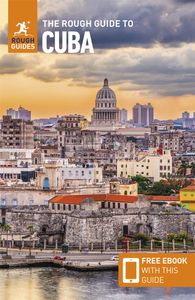
Find even more inspiration here

Planning your own trip? Prepare for your trip
Use Rough Guides' trusted partners for great rates
written by Rough Guides Editors
updated 26.04.2021
Ready to travel and discover Cuba?
Get support from our local experts for stress-free planning & worry-free travels.
- Where to stay
- Travel advice
An American Traveling to Havana: What You Need to Know to go to Cuba
There was so much excitement when booking my trip to Havana , but there was also a little bit of uncertainty. The embargo, that dates back to the 1960s, made most travel to Cuba by Americans off-limits. It hasn’t been long since Cuban and American relations have improved and the embargo has loosened, which allows United State citizens to travel to the country with less regulations.
Since more Americans traveling to Cuba is fairly new, getting the proper information about how to travel to Havana was tricky for me, so I took detailed notes from my trip in hopes that the lessons learned will make it easier for you.
Here are the things you need to know about traveling to Havana.

How to Enter
It is still illegal for Americans to enter Cuba solely as a tourist, you technically can’t just go to ride in a pink vintage convertible or smoke Cuban cigars with the locals. Visiting will require you fit into one of these 12 categories:
- Family visits
- Official business of the U.S. government, foreign governments, and certain intergovernmental organizations
- Journalistic activity
- Professional research and professional meetings
- Educational activities
- Religious activities
- Public performances, clinics, workshops, athletic and other competitions, and exhibitions
- Support for the Cuban people
- Humanitarian projects
- Activities of private foundations or research or educational institutes
- Exportation, importation, or transmission of information or informational materials
- Certain authorized export transactions
Most people will choose education activities , where you will need to have a full itinerary of activities designed for people-to-people contact with the Cuban citizens.
I claimed journalist, which was the obvious selection for me. This choice was stated when booking my flight online with JetBlue and my lodging with Airbnb.
Besides those two times, not one person asked why I was in Cuba.
No one asked when entering the country, while in the country or even upon returning to the United States.

Getting There
You used to have to be tricky when going to Cuba by flying to a place like Cancun first and then transferring to Cuba on a separate flight booking. This worked because Cuba reportedly used to not stamp US passports, so when you returned if just looked like you had a nice vacation in Mexico. Well, they are stamping passports now (there’s a pretty one in my passport now!), plus with the loosened regulations and direct flights it is easier than ever to travel there.
You no longer need to fly to Mexico to get to Cuba.
There are several airlines now flying there from the United States:
- United Airlines
I booked my flight through JetBlue for a screaming good deal ($375 RT from SFO), and had a layover in Fort Lauderdale, Florida before taking the hour flight to Havana.
NOTE: You should go directly to the airlines website to search for flights. If you look at an aggregator site, like Tripadvisor, you will come up with this warning: “TripAdvisor is unable to show requested itineraries or travel plans that include Cuba due to U.S. government regulations.”
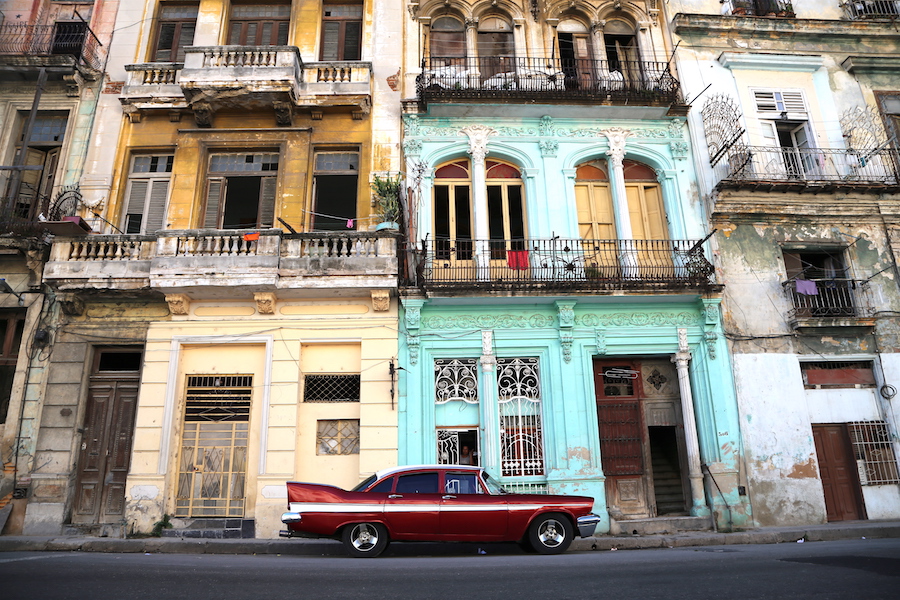
Documentation
All the documentation requirements initially seemed really confusing to me, but in reality it was actually really simple.
You need a Visa to enter Cuba and you can easily get one at your gateway airport, either at the check-in or gate counter, just ask your airline for instructions.
For me, at the Fort Lauderdale airport gate we were instructed to go to the JetBlue counter adjacent our departure gate. They collected the $50 fee, gave me the visa and a green stamp on my boarding pass to indicate my documents had been checked. I returned back to the gate and boarded the plane. Easy peasy.

Health Insurance
A special health insurance that covers the territory of Cuba is required, but this $25 insurance was included in the cost of my flight with Jet Blue, which is typical for most airlines flying from the US to Cuba, so check with your airline.
While on the plane we were given a Health documentation to be filled out (basically just a questionnaire about illnesses you have recently had). After immigration and security, there were tables where these forms were dropped off. Basically, the attendant quickly glanced at them to make sure they were filled out properly and then waved you on. I was never asked to provide an insurance document.
Custom Forms
Though some flights will pass out custom forms while in air, we were told that the blue customs forms could be picked up upon arrival. If your flight attendant doesn’t pass out these forms they can be found right after the immigration check, at the security station. There should be some on the shelf on top of the conveyor belt.
After security, we picked up our bags then went through the “Nothing to Declare” section and gave them the customs form. Then we were in the arrival hall.
- Make sure to bring a pen!
- After landing, getting through immigration, security, customs, health form drop-off and picking up luggage, took about 45 minutes (a half hour of that was actually waiting for the luggage). During this process, no one asked why I was in Cuba.

Currency & Credit Cards
Credit cards.
American credit cards and debit cards are banned in Cuba so you need to make sure to bring enough cash to get you through your entire visit.
How much money should I bring?
My husband and I brought 750 euros for a full 4-days in Havana and spent $700, $87.50 per person per day. This figure does not include lodging and two tours which were booked and paid for online prior to arrival.
If you are a budget traveler, you could fairly easily get by in Havana on much less ($30-$50 per person per day), not including hotel. We spent a bit more because we ate at the fanciest restaurants, drank a lot of mojitos, took taxis everywhere and bought quite a few internet cards.
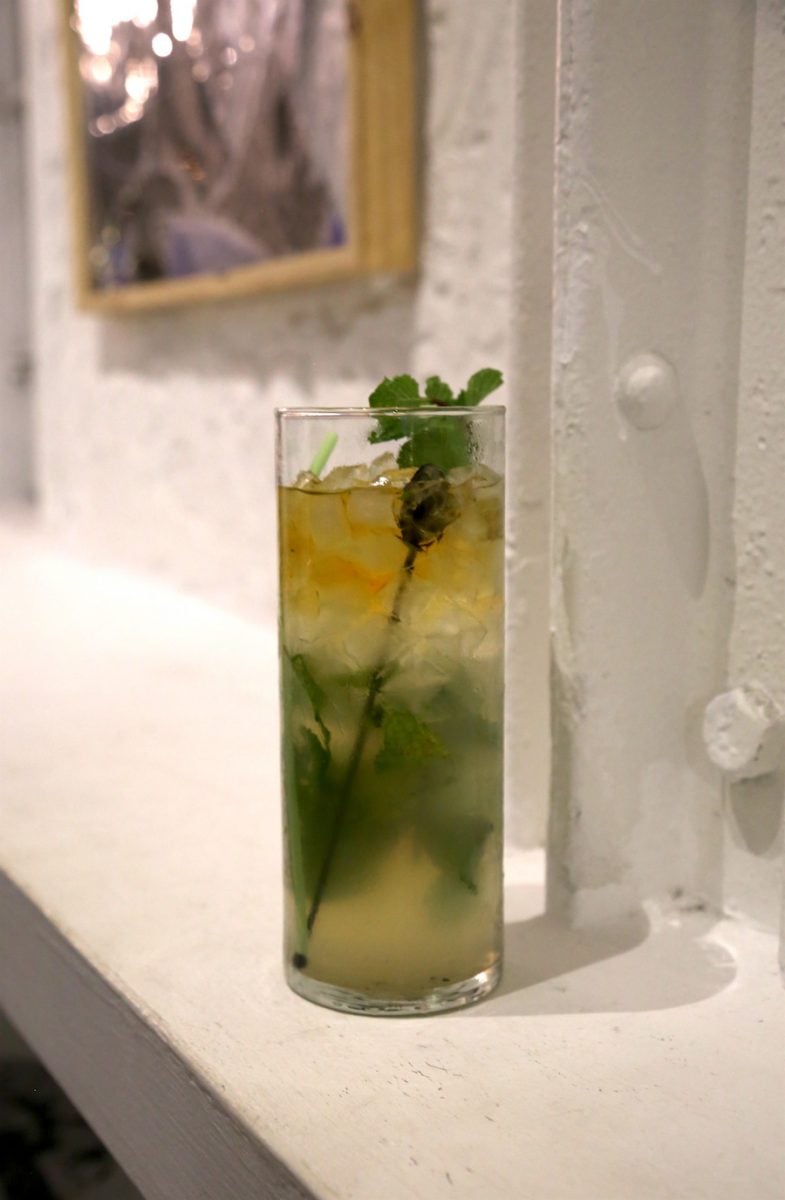
There are two types of currency in Cuba: the tourist CUC & the local CUP. Cubans carry both types of cash and know where to use each. But, in most cases, tourists can get by with just CUCs.
I only exchanged my money for the tourist CUC and did not encounter any need to have the other. With that said, many smaller privately owned shops, especially inexpensive street food stalls, will have prices in CUP, so know the exchange rate which is currently 1 CUC = 26.50 CUP (you can check the current exchange rate here ). Most of these shops will now accept CUCs, but many will not have change for higher bills, and any of your change will be in CUP. So if you are paying at a CUP place make sure you use the lowest denomination of CUC to pay or else you will be stuck with lots of CUPs that you may not be able to get rid of. Always have some $1 bills and coins available for these cases.
The CUC exchange rate is approximately:
- $1 USD = 1 CUC ( check current rate )
- 1 Euro = 1.06030 CUC ( check current rate )
- 1 CUC = 26.50 CUP ( check current rate )
Exchanging Money
If you are a US citizen it is better to exchange your money to Euros prior to arriving in Cuba because there is a 10% tax to exchange USD to CUC. I exchanged my USD to Euros at my bank in Northern California (and brought some backup USD just in case).
It was not an option to exchange my USD into Cuban money while in the US.
You can exchange money at the Havana airport, and will need to if you plan on taking a taxi from there. There are exchange booths (Cadecas) upstairs on the second floor after you exit customs or others outside the arrival doors on the ground floor. You can’t miss them with their large yellow signs and long lines. I checked all of the booths before deciding which one to stand in line at and the lines were about the same – very long .
Check to see how many tellers each booth has before making your decision (some will have only one, while others may have two). Because all lines were about the same, with the same number of tellers, I opted to wait at the indoor exchange booth on the second floor due to the hot weather outside!
It took an excruciatingly long hour and forty-five minutes to get through the line!!!
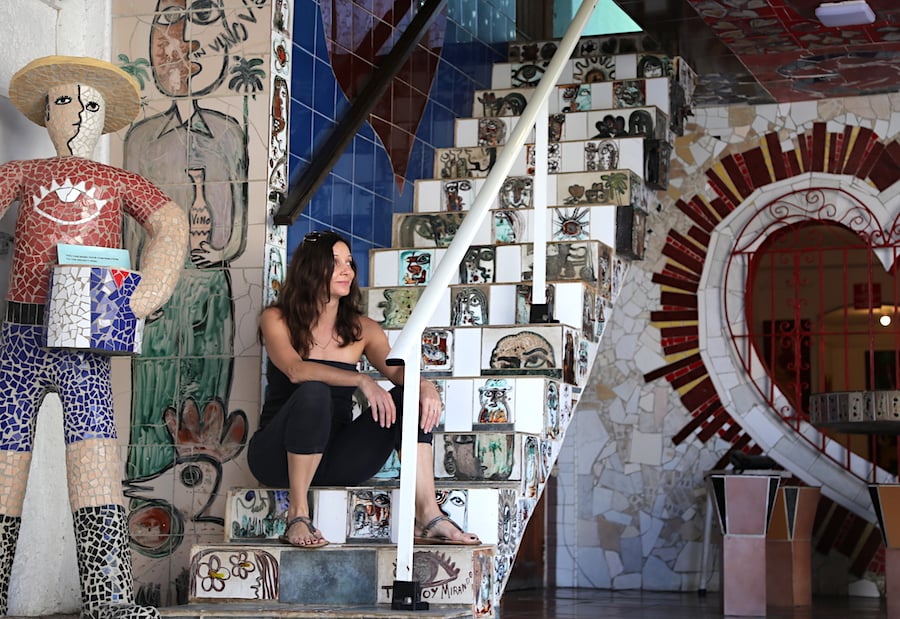
Towards the end of our wait, I did notice some people at the back of the line making little side deals. Someone who wanted to exchange their leftover CUCs to Euros bargained with someone else in line who needed the CUCs just for a taxi. I’m sure there are some sort of legalities against that, but I thought it was brilliant as it saved them a couple hours of waiting in line!
When we were departing Havana I noticed that the exchange booths were about half the length (of course!). I hope you are so lucky to catch it at the right time, but be prepared to wait.
You can also typically exchange money at larger, state run hotels and there are some banks/exchange booths scattered throughout old town Havana, but they had fairly long lines too. I exchanged all my Euros at the airport, because I didn’t want to wait in any more lines and I needed a taxi anyway.
NOTE: When exchanging money always ask for small bills, $20s and $50s are hard to get rid of as many shops and taxi drivers will not have change for that high of a bill. Having mostly $1, $3 and $5 works best. If you have $20s always use them in the hotels or nicer restaurants who will most likely have change, then save the smaller denomination for street food, privately owned shops and tipping.

Most Cubans earn less than 30 CUC per month, so tipping is really appreciated. Leaving a 10% tip is the average, but realize that some restaurants will already include a 10% service charge on your bill, so double check.
Read More > Tipping in Cuba: Who Should I Tip and How Much?
Getting Around
Since internet is very limited and you most likely won’t have GPS, having some sort of a map will make your daily itinerary planning much easier. In most cities you can download an offline Google map , but at post time that is not possible for Havana (take note that with the new regulations this can change at any time). You can try the app Map of Cuba Offline , but I would also recommend buying a map at the airport. You can find them on floors 1 and 2 for between 3-5 CUC depending on the size. Or the StreetSmart map on Amazon beforehand.
There’s an array of transportation options in the city, especially in the center of the action in Old Havana. You can almost always find a taxi, bus, bicycle or horse cart to take you where you need to go, plus the city center is very walkable.
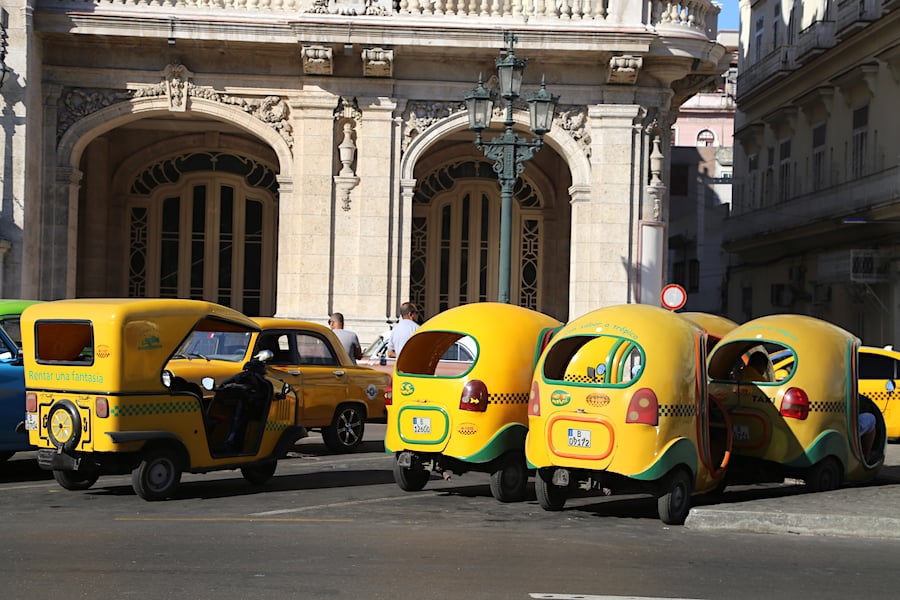

Airport Taxi
You will be bombarded when you cross past customs with taxi offers, many of whom say that they will take you to the bank. Believe me, after the long currency exchange wait in line, it did sound like a really good deal! But, many of these drivers have privately owned taxis. Some will not have seatbelts or the drivers won’t know simple directions to your destinations. Instead opt for the legit yellow taxis that are just outside the arrival doors. These cars are more likely to be fairly priced and have seatbelts! There was a main guy holding up a yellow taxi sign and he led us to one of the cars.
NOTE: Make sure to negotiate the price before you get into any taxi, because even though some have meters, they are hardly ever used.
It cost 30 CUC for us to get from the airport to Hotel Presidente in Vedado, about 7 minutes from old Havana. Depending on the season, you may be able to negotiate a little cheaper rate.

Yellow Taxis
As I said before, yellow taxis are known to be the most legit and most of the major places around Havana will have at least a half dozen of them waiting out front, so it should never be too hard to find one. Always negotiate on pricing, but you should typically never pay more than 10 CUC to get anywhere in central Havana, 7 CUC is more like it if you are really good at negotiating. I only broke this rule once and paid 15 CUC because it was raining and there were no other taxis around. Sucker!
You can also hire the yellow taxis by the hour which we did for 3 hours on our last day in Havana. We paid $50 for the driver to take us to about 7 destinations for 3 hours. Typical hourly prices are anywhere between 15-20 CUC.
Other random taxis
There will be other random “taxis” at some locations offering you a great deal, but most won’t have seat belts and some don’t know where they are going unless the destination is to a major landmark. With that said there may be times when you have to take one. When we were having a late night dinner at El Cocinero the only option was these sorts of taxis, there were no yellow ones in sight. The price was the same, but the guy had no idea where our destination was (he had to stop to ask some locals) and the car didn’t have seat belts. Though, I did feel that he was really appreciative for being able to earn the money.
NOTE: Always have the address of your destination and closest major landmark available for the driver. I always kept this information on my phone and just showed it to them when we hopped in.

Hop on off bus
The Hop on Hop Off Bus is a great way to get an overview of the city and to see some of the major sites, but not to just strictly get from one destination to the next, because it will take forever! There are currently two routes: the T-3 costs 5 CUC and the more popular T-1 is 10 CUCs for an all-day pass (you can buy tickets from the attendant on the bus).
You can catch the bus at any stop, but the most popular is Parque Central, where it is easy to walk to Old Havana from.
NOTE: When you’re riding on the open-air top it’s really hard to tell what are stops and it seemed like they bypassed a few that are on the map, so pay attention!! They do always stop at Parque Central in front of Hotel Inglaterra , so this is a good starting and ending point.
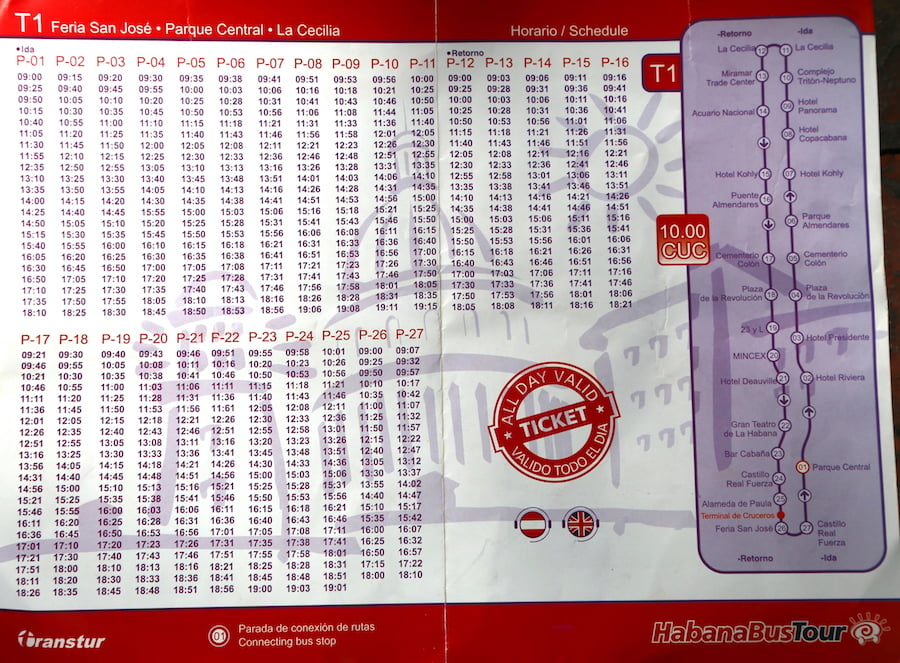
Classic Convertible Cars
You’re in Havana, so you will probably want to ride in one of those snazzy classic convertibles. The cost can range from $25 CUC to $50 CUC per hour depending on the tourist season and where you want to go. Again, always negotiate!
The fanciest convertibles will be on the higher end and one of the jalopies on the lower. We took a Vintage Classic Car Tour for $50 per person, and it included an hour ride in a pretty convertible. Otherwise, there are a dozen drivers with their beautiful cars in front of Hotel Inglaterra at Parque Central ready to take you for a ride.

Accommodations
If you start your hotel search on a place like Expedia or Booking.com , you will begin to get worried. There are only a handful of hotels in Havana and they are mostly owned by the government, so are very expensive (typically $300+ per night). These are the ones that these hotel websites will show and many of them will be sold out.
It is more common for visitors to stay in a Cuban’s private home or B&B, which is way more economical and a local experience. Head over to Airbnb because this is where most of these types of lodgings are listed. You can easily find a room in a cute house for under $50 per night.
I stayed at the lovely Mi Casa Tu Casa , which was a little pricier at $125 per night. But, it had excellent reviews, breakfast was included and there was internet access. Plus, its location was right across the street from the larger Hotel Presidente, where the hop on hop off bus stopped, there were always taxis available, we could exchange money and listen to music on the patio. It was a lovely stay and I would highly recommend it!
- Make sure to read the reviews on Airbnb , so you can ensure that you are booking the best place for your needs
- Cubans have limited internet access, so response time to emails can be slow. If this makes you nervous, I’d recommend using Airbnb’s instant bookings.

Internet Access
Cuba is not like America where virtually every home has a strong internet connection and everyone is walking down the street with their noses in their phones. Havana has limited internet hotspots and you need a card in order to tap into them. Even when some hotels or cafes say that they have Internet, that just means that they are an internet hotspot, but you will still need to purchase a card in order to use it.
There is no such thing as free internet in Cuba.

Cards typically run from 1.50 – 3 CUC for an hour of internet time depending on where you buy them. You’ll can buy them at an ETECSA telecommunications centre (very long lines!) or select hotels (though many will only sell them to their guests).
On some random corners you’ll notice a lot of people loitering on their cell phones. This is a wifi hotspot and there will typically be people selling a little bit more expensive internet cards, but there won’t be a line!

Logging on is fairly simple. You will choose the internet network (you must be near a hotspot) and then a box will appear asking for the login and password information on the card. Once it’s filled out properly you will get a confirmation in the same box and the one hour timer will start. Don’t worry, you don’t have to use the entire hour in one shot, you can log out and the time will pause.
- An hour goes by quickly, so make sure to have everything you need before you log on. Most Cubans will already have their emails written and todo lists ready before logging on.
- Just an FYI that I had no problem accessing and posting to all the social media sites when there was a strong connection.
I hope with these tips it will make you less fearful about traveling to Cuba to check Havana off your bucket list !
This post may contain affiliate links. If you make a purchase through my links, I earn a commission that helps to keep this blog running—at no extra cost to you. For more information read my full disclosure .
Panama City Beach Bucket List: 30 Best Things To Do in PCB Florida Havana Bucket List: 40 Things to Do In Cuba’s Capital Havana’s Hippest Art Factory: Fabrica de Arte Cubano Where to Stay in Havana: 12 Best Airbnb Rentals in Cuba’s Capital City 9 Things To Do on a Long Haul Flight to Cure Boredom How to Create the Perfect Travel Itinerary Key West & Florida Keys Islands Bucket List: 45 BEST Things to Do
Helpful Resources
StreetSmart Map of Havana Book a Tour: Havana: 2-Hour Classic American Car Tour Book a Tour: Discover Old Havana: Small Group City Walking Tour
36 thoughts on “An American Traveling to Havana: What You Need to Know to go to Cuba”
Lot of mojitos :-) Yep it’s a lovely holidays this article is very complete I have never been to Cuba and with your experience I am totally excited to go there I am just scared of the airplain building Can you tell us more about airplain and airport?
Wow! Excellent post! I had know idea that you cannot enter Cuba as just a “tourist”! You covered just about everything! Thank you!
Glad that the article helped you!
Awesome photos, and a great write-up! Cuba is absolutely great, luckily we’re nearby in Miami so it’s a short jaunt :)
You are lucky to be so close!
Havanna looks like a beautiful place! I really hope I get to travel there one day. Thanks for the helpful tips, I really enjoy the layout of your posts!
I hope you make it to Havana soon, it’s an amazing place!
Interesting to hear about their internet system … might be a ways off to visit as a digital nomad, but entirely doable for a holiday!
It’d definitely be a difficult longterm place for a digital nomad! But, worth a short visit :)
What a lovely post with a lot of info. I love to travel. Havana…sound sweet. I should give it a try to go there.Thank you, Annette, for this article. I Enjoyed your writing:)
Fantastic detailed post! Thanks Annette. My wife and I are interested in heading to Cuba sometime soon, and your post was a huge help – especially with the comments about negotiating taxi rates and bringing Euros to avoid the 10% fee.
A couple of questions:
1) From your experience, are any other purchases negotiated – or just taxis? In shops or at street vendors, is negotiating an option?
2) From your post it sounds like being a legitimate blogger seems to appropriately cover the journalist reason for visiting, is that your impression? (Don’t worry, I know this isn’t legal advice).
Thanks again for the awesome insights and I’m thoroughly impressed with your site. Can’t believe I haven’t come across it in the past.
I hope you make it to Cuba soon, it was incredible! As far as negotiating goes, from my experience there wasn’t much going on inside the shops, but some with the street vendors selling touristy things. I’m not a huge shopper while traveling, but even so I didn’t try to haggle at all while in Havana besides with the taxis, I just paid what they asked. For me being a blogger fit into the journalist category, but no one had asked me while I was there. I hope that helps!
Perfect answers, thank you. We aren’t much into souvenirs either, and I’ve gotten the impression that blogging should easily fall within the “journalist” category for reasons to visit. Thanks again and next time I get over to my hometown of Willits I’ll have to stop by Sugo Trattoria. Keep up the great writing!
This post has numerous useful tips and information that were quite handy during a recent trip to Habana. Thank you very much for putting this together.
I am so happy to hear that it helped with your trip. I hope you had as much fun as me :)
Wow, this post contains such a nice information. I must say Kudos to the author. (Y)
We are a team of tour guides in Cuba and your mostly information is accurate that will help us out to get the things easier! :)
This was a great post! We are heading there in July. We have not booked our rooms and wanted to get your advice. We will be traveling with 2 kids, 1 will be 3 yrs old and the other is under 1. Initially we were going to stay at a hotel but as you stated, most are sold out for cost prohibitive. We looked at airbnb and read in several blogs that we should avoid staying in old Havana because parts were sketchy at night and the homes werent updated. So we looked at Vedado. However, we will need to have to take a taxi back and forth a lot since most activities revolve around old Havana. Both of our kids still nap during the day. The last requirement we had is to find a place that has an elevator or on the 1st floor. Any insight on how safe or unsafe old Havana is? And any suggestions on areas to stay?
Annette I really like the details you have gone into. I want to visit Cuba from India in November. Please recommend some internal travel agencies who can organize local visits there..
Unfortunately, I don’t know any of any. But, maybe somebody reading can help you out!
I have a question for you. I am planning a trip to Cuba next month, and I run a food blog. In order to choose “journalistic” what kind of proof or certification do I need to have?
Would you say it’s better to be classified as educational or journalism? I selected educational when I booked the trip because I’d primarily be staying with a friends family and educating myself on the culture as I study Human Communication, but I’ve now to decided to write a blog on the trip for my company’ website as well. I don’t know how intense the itinerary check but I don’t want to come across any problems. Thoughts?
I can’t guarantee it, but I think either would work. Though I was not asked for my classification upon arrival, it would be good to have an itinerary handy if you’re using educational and business cards or screenshots of your blog if you claim journalist. It seems that it may be easier to just stick with educational.
This post is awesome and SO helpful. I’m heading to Cuba in a few weeks and your information is so thorough and great! I will need to link this to my blog when I write about my experiences in Cuba. Thanks!
Traveling to Cuba is totally fine as long as you stay in a private place. If you wish you could also support Cuban people which is quite easy. For example, 8-year-old phones and laptops which are usually stored or thrown away in deloped countries are wonderful gifts in Cuba. I would suggest prioritizing children, as Jose Marti used to say “Los Niños son la esperanza del mundo”. http://www.airbnb.com/rooms/5636960
I want to travel to havana.
Is the Visa $50 plus another $50 service fee for a total of $100? I’ll be purchasing in Miami.
I paid just $50
I found your blog after booking flights for my husband and me to go to Havana. I’m proud to say that we got back last Saturday after a week in Cuba and reading your blog ahead of time was extremely useful. Thanks!!!
I am so happy to hear that! I hope you had a fantastic time.
Thank you so much for this information!! Are there places other than the airport to exchange money? Are the easy to find like Mexico?
Yes, you can exchange at local banks and some of the major hotels. It shouldn’t be too hard. The only problem would be if you need money for a taxi from the airport, then you’d have to exchange at the airport.
Thank you for this great information it has been very very helpful. Your detailes have eased my worries about my upcoming trip.
Can you send me some information on visiting the beach?
I realize this is years old at this point but WOW! what great information to start. THANK YOU SO MUCH Annette! You are AWESOME.
Thank you! I hope you have a great trip to Cuba :)
Wow, Annette! I’m sitting in FLL airport and half tempted to take the next flight!! This quite a brilliant piece you’ve put together here. Thank you!
Leave a Comment Cancel reply

Hey Bucket Listers! I'm Annette .
I’m a goal obsessed mid-lifer, traveler, experience collector, fear crusher, digital marketer and author with big bucket list dreams. Let's Connect!
Want Inspo To Your Inbox?
I’m giving you practical tips, exclusive tools and the inspiration to stop dreaming about your bucket list and start living it.
Whatcha Looking for?
Home About Blog The Shop Partnerships Contact
Bucket list ideas travel facing fear & anxiety.

Havana travel guide
Havana tourism | havana guide, you're going to love havana.
Havana is today one of the most popular tourist spots in the Caribbean since it reopened its doors to tourism in the 1990s. Cuba's capital is home to 2.1 million inhabitants and has an incredibly rich history.
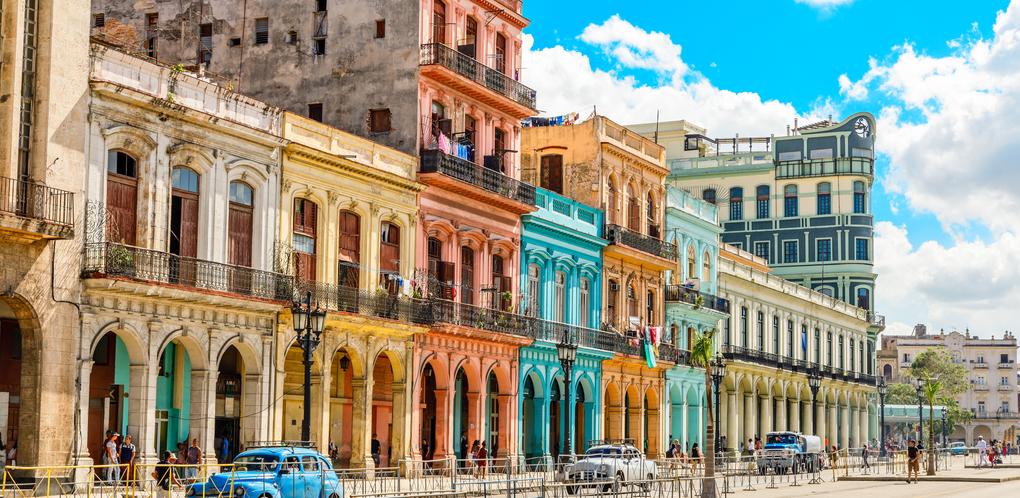
African and Caribbean influences can be felt throughout. The traditional Spanish architecture, classic American cars, and tropical climate all contribute to the charm of this city, which is sometimes referred to as the Rome of the Caribbean.
Visit Havana for the culture, music, food, festivals, and gorgeous sights. Simply strolling through the streets of the Cuban capital is a magical experience.
Top 5 Reasons to Visit Havana
1. immerse yourself in the arts.
There is a lot to do in Havana if you appreciate the arts: head to the Great Theater of Havana, the International Ballet Festival, and the Havana International Jazz Festival. If you enjoy the fine arts, visit the Museum of Decorative Arts and the National Museum of Fine Arts.
2. Discover the Island's History
Learn about Cuban history at the Museum of the Revolution and discover the island's colonial past by visiting the UNESCO World Heritage Site of Habana Vieja.
3. Admire the Architecture
Meander through streets framed with baroque facades and colorful houses; Havana is a unique city where Art Nouveau and Art Deco influences from the early 20th century meet older Spanish and Moorish influences from the colonial period.
4. Enjoy the Beach and Tropical Climate
You will enjoy warm weather all year round. The Playa del Chivo and Playas del Este are the perfect places to splash in the Caribbean Sea.
5. Learn about Cuban Culture
Your trip to Havana will be an unforgettable cultural experience. The island is known for producing cigars, but you will also find that the local cuisine alone is worth the trip. Traditional music is still immensely popular and you will hear styles like habanera or the mambo and discover modern Cuban hip-hop.
What to do in Havana
1. la habana vieja: quintessential cuba.
The city center and a UNESCO World Heritage Site, Habana Vieja remains the essential way to experience history in Cuba's capital. The architecture brings the past to life at notable stops like Catedral de San Cristobal and Castillo de la Real Fuerza, while the cultural hubs of Plaza de Armas and Plaza Vieja provide for stark contrast as they exude the pulsating social life of contemporary Cuba.
2. Malecón: Timeless Walks by the Sea
Though a stay in Havana will probably bring you back to this famous boulevard again and again, walking along the ocean remains an unforgettable experience, taking an evening stroll as the sun sets across the bay. Step inside the Hotel Nacional and enjoy the old-timey show of the Cabaret Parisien.
3. Parque Histórico Morro-Cabaña: Fortresses Flanking the Bay
Looking down on Habana Vieja from across the water are the imposing fortresses of Morro y Cabaña. Still boasting barracks and artillery cannons of centuries past, El Morro was once the first line of defense against pirate attacks. Just half a mile further, the military history continues at La Cabaña, another fortress built in response to the British invasion.
4. Paseo del Prado: 20th Century Vibes
Paseo del Prado was the first paved road in the city of Havana, and it retained its grand reputation throughout the centuries. The 1900s brought rich, European-style architecture to this promenade. Passers-by love to gawk at the rows of ornamented mansions and hotels, making a stop at the Gran Teatro opera or the post-revolutionary National Capitol.
5. Fusterlandia: A World of Cuban Art
The seaside neighborhood of Jaimanitas is a living, open art museum, affectionately known as Fusterlandia. Tourists come from far and wide looking for inspiration in these streets, and it is a treat to let the mind wander on a lackadaisical trip through the colorful area packed with sculptures, mosaics and murals -- all thanks to the restlessly creative mind of Cuban artist José Fuster.
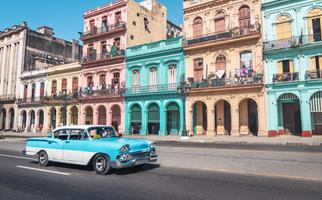
Activities & attractions in Havana
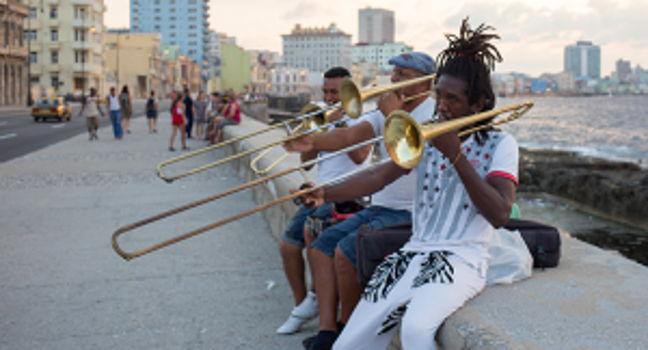
Nature & Outdoor Activities
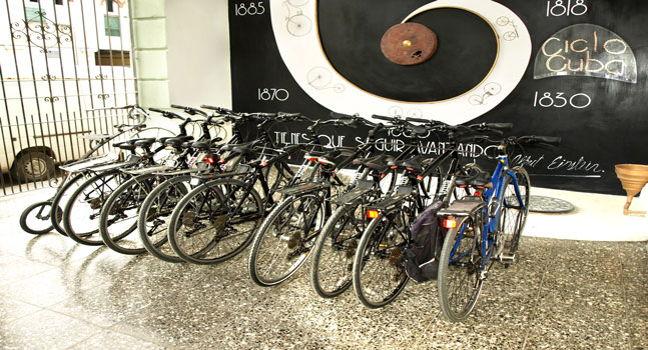
Other activities
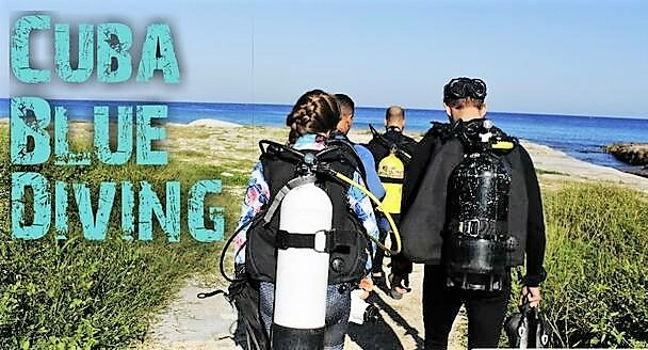
Where to Eat in Havana
You must try some popular Cuban dishes during your trip, including barbecued meats and rice and beans. If you want to enjoy traditional Caribbean fare, Restaurante Café del Oriente, La Guarida, and Bella Habana are great options. You can try the mixture of Chinese and Caribbean influences at Flor de Loto or Tien Tan, or, if it's seafood you're after, try El Litoral, Mediterraneo Havana, or Paladar Vistamar. Make sure you try a few cafes for their traditional sandwiches, such as Bar Bilbao or Bar La Dichosa. Head to Bishop Street or walk a few blocks away from any popular area to find street food vendors that serve pork burgers and coconut pies. Street food typically costs between CUC$5-8, a meal in a sit-down cafe will cost you CUC$20, and expect to spend CUC$40 or more for a meal at a more upscale place.
When to visit Havana
Be prepared to deal with crowds if you travel to Havana between the high season, which lasts from November to May. You can avoid crowds by planning your trip in the summertime but the heat can be a bit much. Visit Havana in August if you want to enjoy the city's carnival or in February if you are interested in the Cigar Festival.

How to Get to Havana
International flights land at the Jose Martí International Airport (HAV), which is located nine miles southwest of Havana. Your hotel should have a shuttle available at the airport, but there are other ways to get to Havana. You can take a taxi for CUC$20 and reach Havana within 20 to 30 minutes or head to Terminal 1 to take a bus. Note that you will have to pay in Cuban National Pesos for the bus fare. You can also rent a car at the airport for CUC$50-125 a day (and an additional CUC$15 a day for insurance).
You can easily drive to Havana from any other city on the island. Take Autopista A4 to Havana if you are leaving from San Cristobal, Pinar Del Río, or another location in the western portion of the island. If you are leaving from Santa Clara or another city in the eastern portion of the island, follow the Autopista Nacional to Havana.
You will find Viazul bus stations in all the major cities on the island and can ride a bus to the Viazul main station on Avenida 26 in Havana. Taking a Viazul bus from Trinidad to Havana will cost CUC$25 and a bus ticket from Santa Clara to Havana will cost CUC$18. You can also take an Astro bus from any major city to Havana if you want to get a slightly lower price, but keep in mind that these buses are not as comfortable.
Airports near Havana
Airlines serving havana, where to stay in havana.
Staying in the Habana Vieja area is ideal if you want to be close to all the main landmarks. You can stay at the Hotel Ambos Mundos, Hotel Florida, Hotel El Comendador, or at the Hotel Santa Isabel if you want a more upscale experience. The Hotel Plaza and Hotel Saratoga are good options if you would rather stay in the Centro area. If you want to stay in the Vedado neighborhood, choose the Hotel Nacional or the Hotel ROC Presidente.
Popular Neighborhoods in Havana
Old Havana - Old Havana, or Habana Vieja, is the original city of Havana and is densely populated. This is where you will find the Plaza de Armas, the Plaza Vieja, and the fortifications built by the Spanish during the 16th century. This area is currently undergoing restoration efforts and is easily recognizable with its narrow streets and old buildings.
Vedado - this is where you will find John Lennon Park and the tallest building on the island (the FOCSA Building). Make sure you see La Rampa (Calle 23), one of the busiest streets in Havana and the Malecón area near the waterfront, a popular boardwalk where you will find many restaurants.
Centro - an older area that has yet to be restored. This is where you will find the cigar factory Real Fabricas de Tabacos Partagás and some art galleries such as Callejon de Hamel.
Where to stay in popular areas of Havana
Most booked hotels in havana, how to get around havana, public transportation.
Riding the bus around Havana is a very affordable way to get around. You should only pay CUC$1 for a bus fare. The downside of using public transportation is that routes and schedules are not always easy to understand.
You must take a taxi at least once during your trip to Havana. You will find that most taxi services for tourists use modern cars and that you will have to look for a carro or community taxi to ride in an old American car. Community taxis are cheaper but you will have to share your taxi. You will easily find taxis waiting in front of hotels but you can also hail one on the street or simply call a taxi service. Always agree on the price before getting in since not all taxis have meters. You will typically pay a base price of CUC$1 and another CUC$.50 per mile. The ride between Old Havana, Vedado, and Centro should be between CUC$3-5. If you want a more affordable and authentic experience, take one of the scooter taxis known as coco taxis.
There are several car rental agencies at the airport, such as Havanautos and Cuba Car. Renting a car will cost you between CUC$50-125 a day and an additional CUC$15 a day for insurance. You will also have to pay for parking. You can rent a car with a driver for the same price as renting a car.
The Cost of Living in Havana
Shopping streets.
If you would like to shop for cigars, rum, and other local items, look for official La Casa Del Habano stores or go to an outlet like the Partagás cigar factory. A box of cigars will typically cost between CUC$30 and several hundreds of pesos. If you want to shop for clothes, souvenirs, and crafts, head to the outdoor market at Ferria 23 and M near the Hotel Nacional. You will find another similar market with books and memorabilia from the revolution at the Plaza de Armas. If you want to find brand stores, stop by the Galería Comercial Comodoro on the beachfront.
Groceries and Other
There are Palco stores in the Miramar area and on Avenida Tercera and Calle 70 where you can shop for groceries. Go to one of the Agromercados in Vedado or in the Centro area for fresh produce. Expect to pay CUC$0.25 for a loaf of bread and CUC$1.60 for a liter of milk.
- North America Tours
- Havana Tours
Havana Tours and Trips 2024/2025
It’s no wonder that a trip to Havana is on many travelers’ bucket lists – the iconic Cuban capital has long been admired by adventure-seekers, history buffs and bohemians around the world. And for good reason, too: it represents an intoxicating blend of several cultural influences – Spanish, Caribbean, African and American, to name a few. Between the sensual nightlife scene, magical cuisine and beautiful streets that are drenched in over 500 years of history, there is no doubt that holidays in Havana will excite, surprise and charm all stripes of holidaymakers.
- Cuba Travel Guide
66 Trips in Havana with 226 Reviews

- Starts Havana, Cuba
- Ends Havana, Cuba
Round Trip: Best Of Local Cuba
- Free cancellation
- Trip customizable
- Tour Type Private Tour
- Activities City sightseeing & Beach City sightseeing , Beach & Cultural, religious and historic sites 'data-more-tripid='16831'>+1 more
- Accommodation Hotel & Home-stay
- Transport Bus, Rickshaw & Taxi
- Age Range 1-79 yrs
- Operated in English, Spanish
- View More Jan 1, 2019 Jan 2, 2019 Jan 3, 2019

Cuba Getaway: Vibrant Culture, Great Beaches & More
- Tour Type Independent Tour
- Activities City sightseeing & Beach City sightseeing , Beach , Natural landmarks sightseeing & Cultural, religious and historic sites 'data-more-tripid='15573'>+2 more
- Accommodation Resort, Hotel & Home-stay
- Transport Bus, Private Vehicle, Train & Rickshaw

Cuba Getaway - Havana & beyond in 5 days
- Activities Sightseeing Tours
- Transport Private Vehicle

8 Day Original Cuba Tour
- Best price guaranteed
- Tour Type Small Group Tour
- Activities Walking tours & Local culture Walking tours , Local culture , National parks , Snorkeling , Party and nightlife , Art and architecture , Museum and gallery visits & Cultural, religious and historic sites 'data-more-tripid='38435'>+6 more
- Accommodation Guest House & Resort
- Transport Bus, Private Vehicle & Taxi
- Age Range 2-80 yrs
- Operated in English, German, Spanish

Locally Cuba
- Activities City sightseeing & Natural landmarks sightseeing City sightseeing , Natural landmarks sightseeing , Beach , Art and architecture , Farm and plantation visits , Rickshaw, cycle or local transport tours & Honeymoon 'data-more-tripid='16167'>+5 more
- Accommodation Resort & Home-stay

Beautiful Cuba
- No booking fees
- Activities Cultural, religious and historic sites & Local culture
- Accommodation Guest House
- Transport Private Vehicle & Bus
- Age Range 15-99 yrs
- Operated in English
- Brochure Price: US$ 1,770
- Special Deal (30%): - US$ 531
- Total Price from: US$ 1,239
- Apr 27 Only 5 seats left
- May 18 Only 9 seats left

Cuban Rhythms: Beachfronts & Havana Vibes
- Activities Wildlife & Cultural, religious and historic sites Wildlife , Cultural, religious and historic sites , Explorer & Safari 'data-more-tripid='4611'>+2 more
- Age Range 18-39 yrs
- Brochure Price: US$ 999
- Special Deal (25%): - US$ 250
- Total Price from: US$ 749
- Apr 18 Only 8 seats left
- Apr 25 10+ seats left

9 Days: This Cuban Life
- Activities Local culture & Walking tours Local culture , Walking tours , Cooking classes , Museum and gallery visits , Cultural, religious and historic sites & Natural landmarks sightseeing 'data-more-tripid='41562'>+4 more
- Accommodation Guest House & Hotel

Discover the West of Cuba
- Activities City sightseeing & Countryside and village visits City sightseeing , Countryside and village visits , Farm and plantation visits & Cultural, religious and historic sites 'data-more-tripid='23893'>+2 more
- Transport Private Vehicle, Boat & Bus

Cycle Cuba: West
- Activities Bicycle tours
- Transport Bus & Private Vehicle
- Jul 01 10+ seats left
- Oct 07 Only 3 seats left

Highlights of Cuba! Havana & Varadero
- Activities City sightseeing & Honeymoon

Cycling Cuba
- Accommodation Hotel
- Transport Taxi
- Age Range 16-95 yrs
- Oct 12 Only 8 seats left

Roundtrip Cuba Local
- Accommodation Hotel, Hut, Villa & Home-stay
- Transport Bus, Private Vehicle & Boat

Best of Cuba
- Accommodation Guest House, Hostel & Hotel
- Transport Private Vehicle, Flight, Taxi, Bus & Boat
- Brochure Price: US$ 2,375
- Special Deal (10%): - US$ 237
- Total Price from: US$ 2,138
- May 12 Only 7 seats left
- Jun 23 10+ seats left
Traveling to Cuba? Chat with a local travel specialist in Cuba who can help organize your trip.
Havana Tour Reviews
Havana - tour highlights and travel tips.

Tour Highlights
- Old Havana is a historical district whose winding cobbled streets are lined with some of the most gorgeous baroque and neo-classical buildings, including the Castillo de Real Fuerza and the Catedral de san Cristobal.
- Stretching for 7 kilometers from the Vedad to Old Havana, the Malecón is Havana’s famous beachfront promenade. A favorite hangout spot for locals and tourists alike, it is the ideal place to take a moment to relax and admire the beautiful architecture juxtaposed against the tranquil ocean view.
- Castillo de los Tres Reyes del Morro, or simply the Morro Castle, is a 16th-century fort that was built at the entrance of the bay to protect the city from pirates.
- El Capitolio is an impressive historical building that used to be the seat of the government until the Cuban Revolution in 1959. This stunning edifice, which is reminiscent of the United States Capitol, houses the Cuban Academy of Sciences.
Travel Tips
- For a true Cuban experience, visit one of the cigar factories, where you can learn the age-old technique of making the country’s most famous export.
- Havana is a great place to catch a game of baseball – Havana Industriales are the city’s most successful and beloved team, which is why their home games might be your best bet to experience local fervor.
- Art lovers will enjoy visiting the Fábrica de Arte Cubano, an up-and- coming culture hub housed in a former cooking oil factory that hosts exhibitions, performances, live concerts and films.
Popular Activities
- Cultural, religious and historic sites tours
- Explorer tours
Upcoming Departures
- Spring 2024/2025
- Summer 2024/2025
- Winter 2024/2025
- August 2024
- September 2024
- October 2024
- November 2024
- December 2024
- January 2025
- February 2025
- August 2025
- September 2025
Havana Durations
- 8-days Havana Tours
- 9-days Havana Tours
- 10-days Havana Tours
- 15-days Havana Tours
- 1-week Havana Tours
Sign-in to unlock instant trip discounts. Create wish lists and save up to USD 1,500.
- Work with me
- Privacy policy

- Years in review
- United Kingdom
- Bosnia & Herzegovina
- North Macedonia
- Philippines
- South Korea
- South Africa
- Africa Overlanding
- Central America
- New Zealand
- Solo Travel
- Budget travel
- Travel tips
- Travel itineraries
- Hidden gems
- Bucket list
- Travel resources
- Digital nomadism
- Blogging tips
- Start a travel blog
Cuba , Opinions
What i really thought of cuba – my honest views.
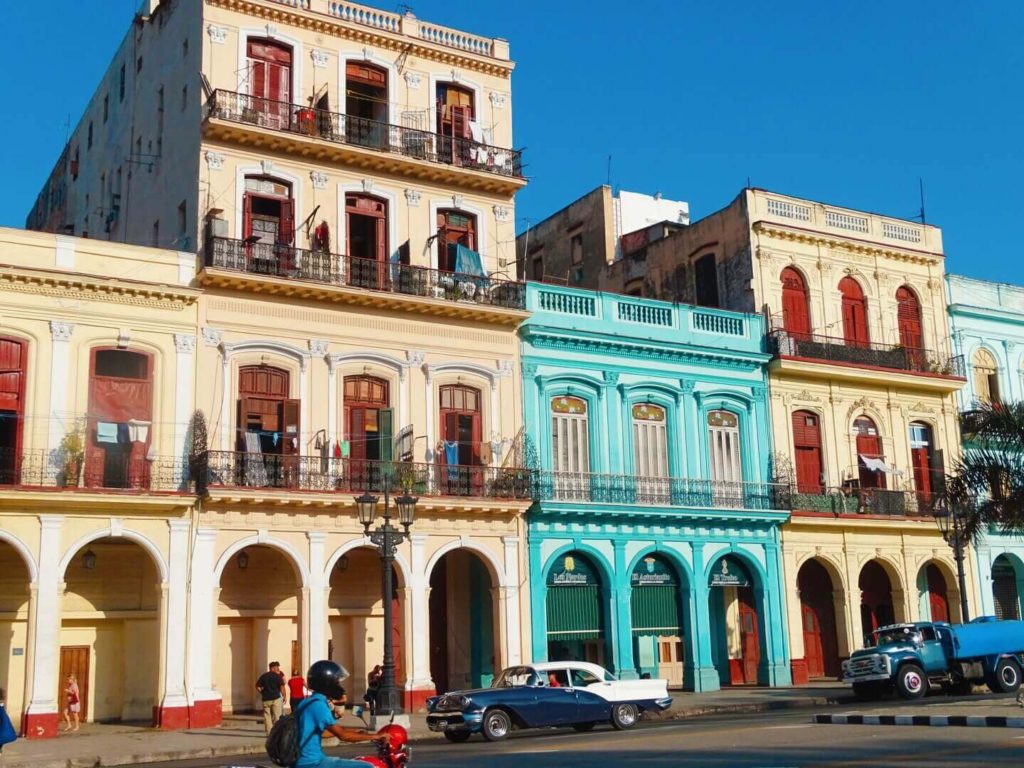
Table of Contents
This post may contain affiliate links to things like tours, hotels, Amazon associates and products. These help me earn a small commission at no additional charge to you.
In February 2020, I took the trip of a lifetime to Cuba.
After my 10 days in Cuba , I can safely say it wasn’t what I expected.
Was it the funnest, most relaxing or enjoyable trip of my life?
Was it one of the most interesting trips of my life?
Is it easy to travel solo in Cuba ?
Absolutely not! In this blog, I’ll tell you what Cuba is like so you can decide whether a trip is right for you…
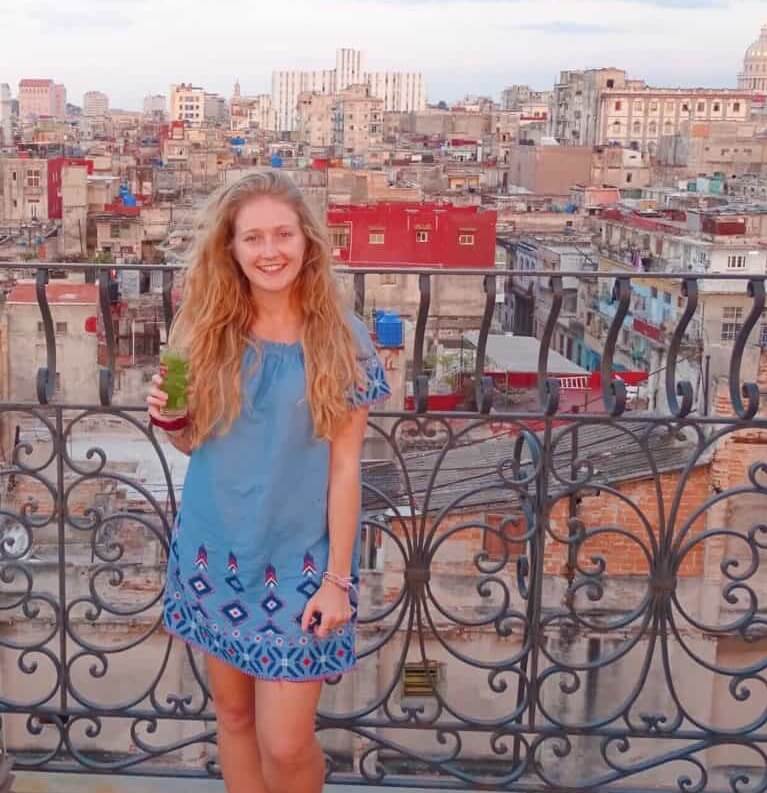
Tricky things about Cuba
1. You can’t bring Cuban money in or out of Cuba.
2. Many ATMs are out of cash. 3. US bank cards don’t work and there’s a 10% fee added to exchange of US dollars.
4. Due to economic sanctions, you can’t buy many day-to-day products like shampoo. Pack everything you need! 5. The internet barely works. You need to pick up a scratch card from an ETECSA store then log in from hotspots in public spaces. And even then it doesn’t really work.
All these things considered, I was kind of stressed the couple of days before my trip. Because I was flying hand luggage only from Mexico (it was £150 cheaper than checking bags), I had to find everything I needed in under 100ml bottles. This meant buying empty bottles and dispensing my suncream and moisturiser.
I was also worried about money as I’d just lost my Revolut card and my only other was a MasterCard. Even though it was UK-issued, I’d heard that these sometimes aren’t accepted in ATMs as MasterCard is American. Basically, I needed to work out my Cuba budget and bring all my cash in Mexican pesos to exchange when I arrived.
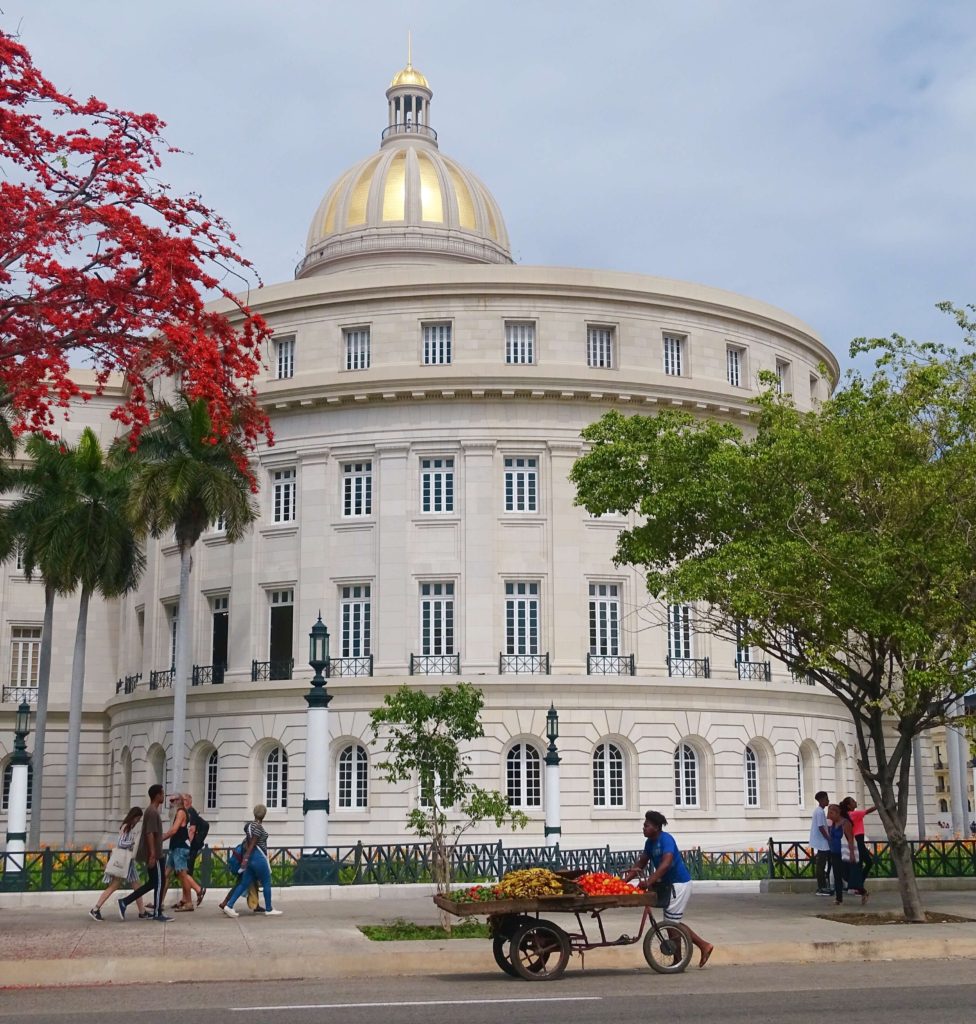
Arriving in Cuba
When I landed in Cuba , my airport experience was unlike any other. Havana airport looked straight out of the 1950s and was a bit of a shambles. I was told I needed a certain form to exit the airport but the desk that issued them told me I didn’t need one. With a bunch of other confused travellers, I went between the two desks trying to get myself out of the airport (in broken Spanish). It took ages! Once I finally escaped, I was greeted with the next challenge: queuing up for currency exchange. Luckily, I was the fourth person in the queue but it still took an hour. There was just one window open with a guy counting bills as slowly as he could, it seemed. I felt awful for the people at the back of the queue. If it took me an hour to move four places, it must have been dawn before the 50th person got their Cuban currency. It was midnight already so I was grateful to jump in a cab and head to my hostel. My cab was $25 for a 20-minute ride, no bargaining. Being used to $5 rides in Mexico, the Cuban prices were already hurting my head.
First impressions
The next day, I stepped out onto my balcony and looked down over the streets of Havana. The stress of my arrival dissipated. Below, locals hung out their washing and chatted in doorways of four-storey buildings as retro cars cruised by. Yep, I was actually in Havana and, over the next few days, I was to discover what Cuba is really like to visit.
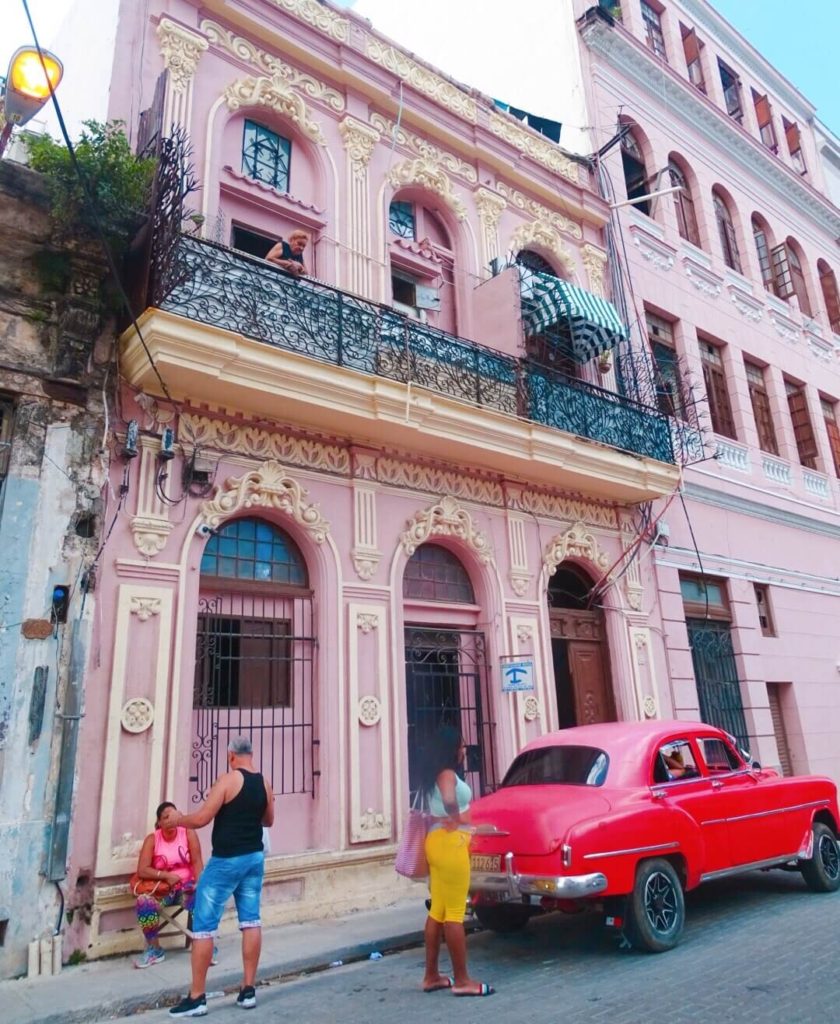
Of course we’ve all seen the Instagram photos of Havana. Those pink Cadillacs and colourful houses.
Is it all as it seems?
Well, partly. The colourful houses exist; so do the Cadillacs. There are indeed parts of Old Havana that are truly photo paradise. But there are also backstreets upon backstreets of rundown houses, construction and piles of trash. I even heard a rumour that there are houses totally derelict inside yet the exteriors have been licked up with a pretty coat of paint. I soon learnt that aesthetics are central to Havana yet it’s not all it seems.
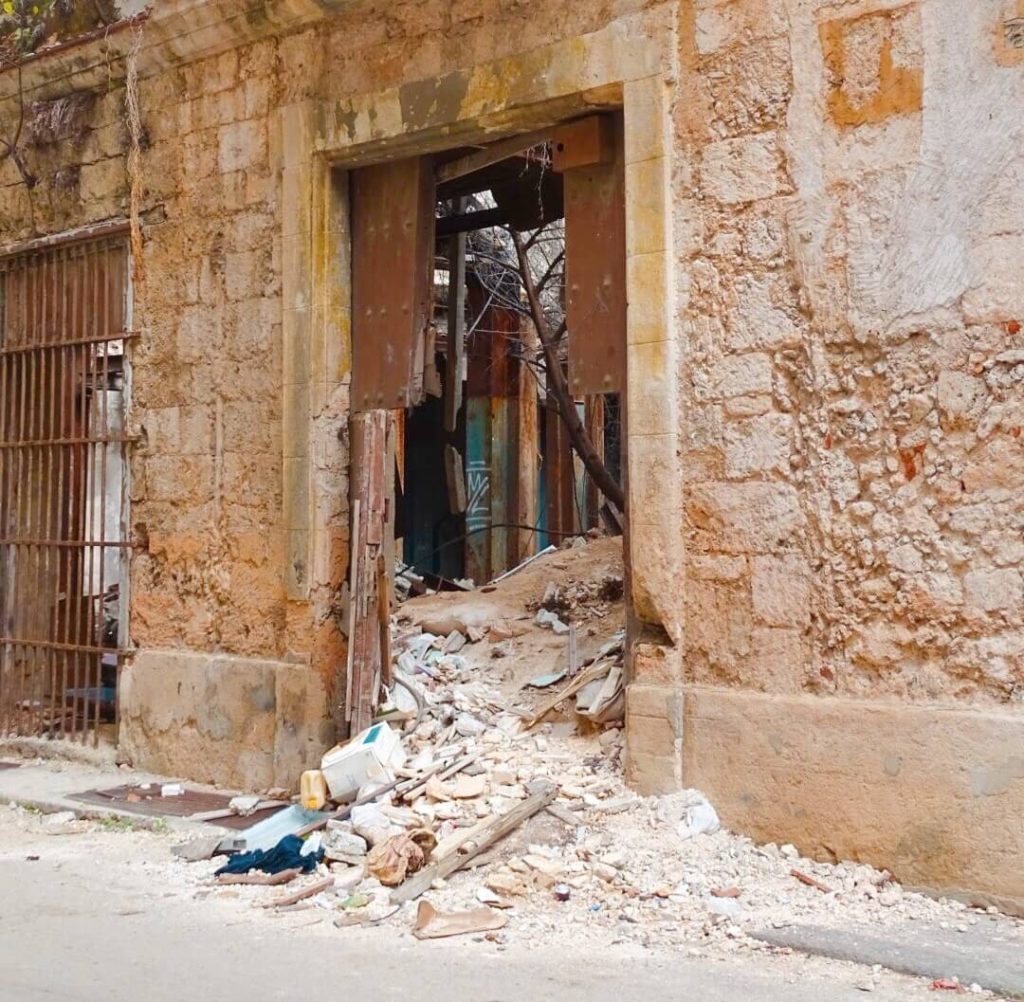
More to the point? The people. Take your eyes off the Insta facade and you’ll notice what they’re doing. Not dining in swanky Old Havana restaurants, not riding in the passenger seat of Cadillacs. I’m aware there’s a divide between tourists and locals many places in the world but I’ve never felt it stronger than in Cuba. I wanted to know more and as a result, spent much of my time in Cuba trying to work out…
What’s life like for Cubans?
In many ways, it’s tough. Firstly, monthly wages are as little as $20 USD. This is because, under communism, the government own almost everything. Although it became communist 60 years ago, this is still what Cuba is like today. Instead of restaurant owners or taxi drivers keeping their profit, they’re required to give it to the government who then pay citizens equally. At best, it’s ‘fair’ that everyone gets the same. At worst, it’s a controlling, money-hungry system nearing on dictatorship. Because wages are so low, a ration system exists. Lines stretch around the corner as people queue for basic food items.
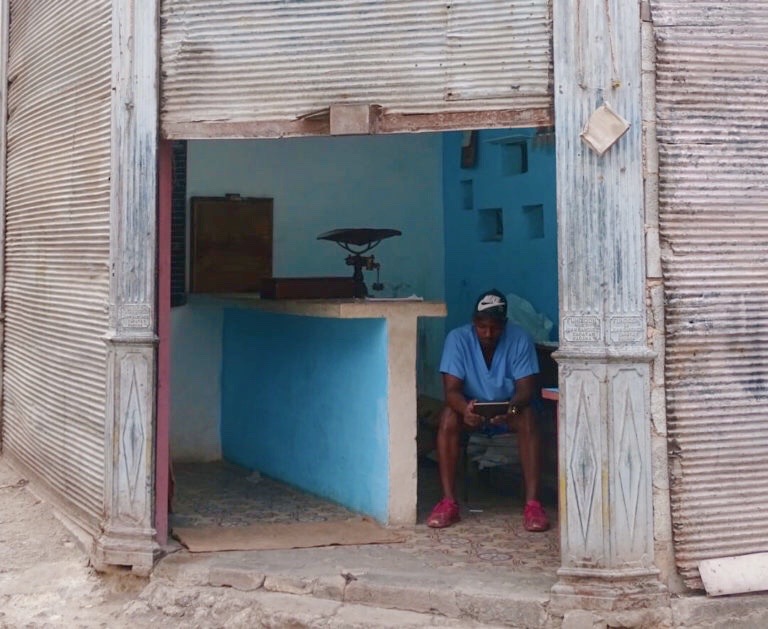
Due to the nature of communism, things like education and healthcare are free. Don’t get me wrong; I’m all for those things being accessible to all. But when Cuban wages are considered, they have to be. People need basic freedoms and decent wages, not just freebies.
The two currency system
This baffled me at first. When you visit Cuba as a tourist, you’ll withdraw or exchange your money into Cuban Convertible Pesos (CUC) which can be used to pay for accommodation, transport and meals in touristic restaurants and cafes. However, the locals are paid in a different currency: Cuban pesos (CUP). As a tourist, you can switch some CUC to CUP in a bank and benefit from the much cheaper prices of local food sold in pesos. Meals cost 5-10 CUC ($5-10) in touristic restaurants but around 20 CUP ($1) in local restaurants. 2021 update – the CUP has now been scrapped! Originally, I assumed this two currency system was to keep tourists spending at higher costs. But as someone pointed out, it’s probably more sinister than this: to prevent locals from affording luxuries. When earning and spending in CUP, it would be impossible to afford Western-style food, luxury cosmetics or really, anything that goes against communism.
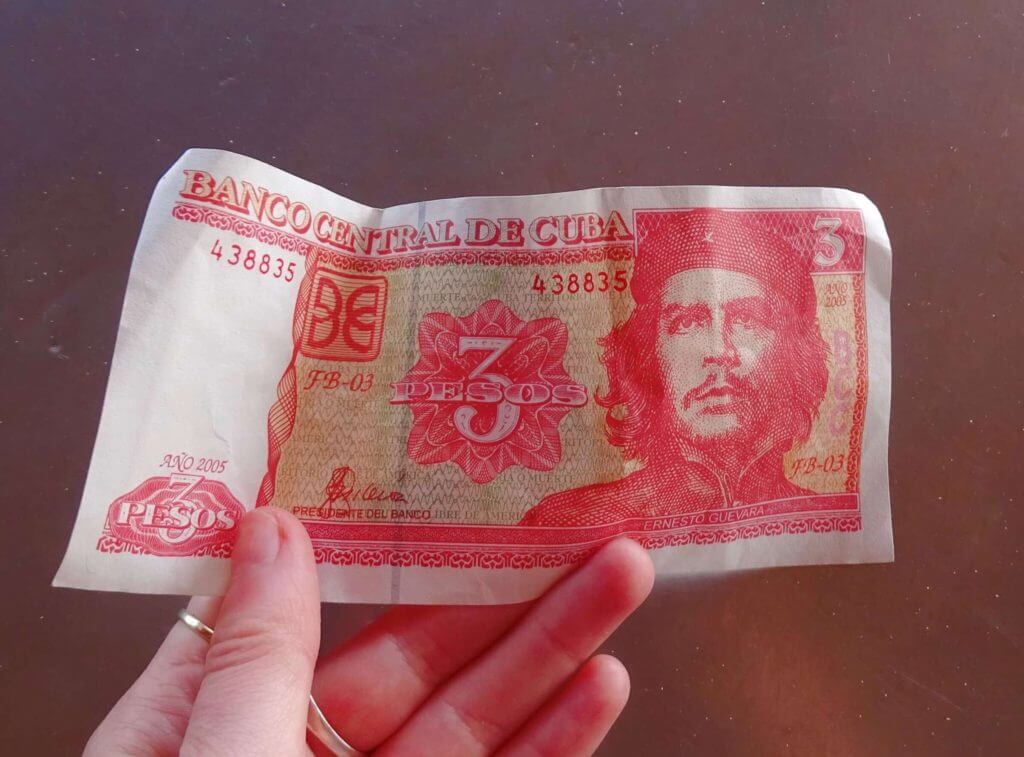
Connection to the rest of the world
Whatsmore, Cubans are rarely able to leave Cuba. An appointment at the visa office costs around $2,000 which equals about eight years’ salary. It also won’t necessarily be granted. The situation with the internet also impacts life for Cubans. The internet isn’t heavily censored like China’s but it’s simply hard to access. Cubans can purchase mobile data but it’s so expensive that it’s impossible for many. If the Cuban government want to cut their people off from the rest of the world, they’re succeeding.
How to help?
What frustrated me about visiting Cuba was my helplessness. Yes, I could take a local cab but the driver wouldn’t get my money. I could eat in a restaurant without it reaching the family who run it. I could stay in a hotel and my money would simply be passed onto the government. During my travels around Asia and Mexico, my spending has helped local people. Unfortunately, this is not what Cuba is like. For many years, the money hasn’t trickled down.
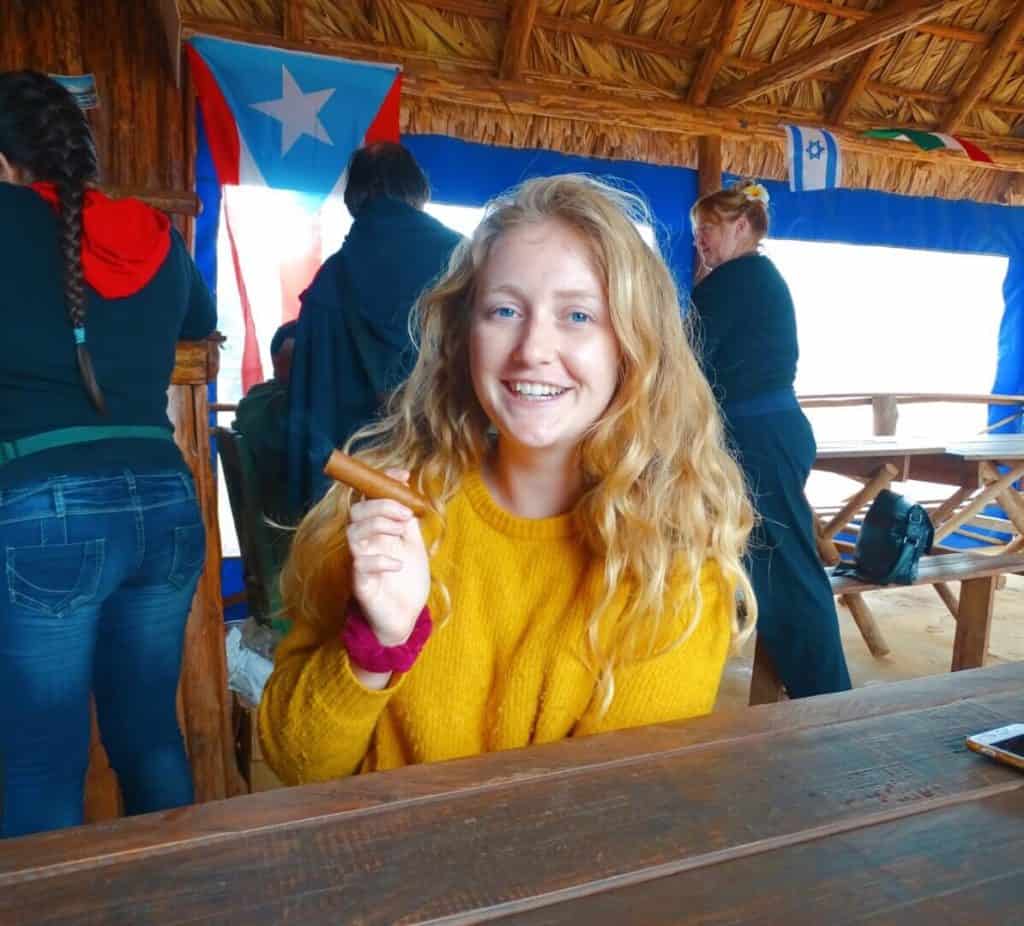
What’s changing?
Things are improving, slowly. Now Airbnb is allowed in Cuba, locals can rent out their spare rooms and host tours and activities. Sadly, 60% has to be given to the government but it’s something, right? If locals can lead a tour at $20 per head and attract 15 customers per time, there’s still close to $200 dollars coming their way after deductions. The last couple of years have changed everything in Cuba as this would have been a wild dream even 10 years ago.
Attitudes of men in Cuba
Aside from my frustration at seeing how people live under communism, there was one other BIG pet peeve from my time in Cuba: Harassment from the men. I’ve travelled to many places with questionable safety reputations such as India and South Africa. People have been quick to warn me but I’ve never experienced anything but kindness and generosity from the locals. Yet, the one place where the men were actually inappropriate and creepy, no one warned me about? Before I go any further, I’ll mention that Cuba is a very safe country. The men aren’t going to hurt you (perhaps they’re too scared of their communist government). It’s all talk and bravado. That doesn’t make it right but it does mean you’re safe as a solo female traveller. Still, I felt uncomfortable and harassed during my trip to Cuba. To my fellow women travellers wondering ‘what is Cuba like for a holiday?’ I feel it my duty to warn you. Men catcalled, beeped their horns and trailed beside me seeking my attention however many times I told them to get lost. It was relentless. They weren’t aggressive or threatening. It was old-fashioned, toxic chivalry; the idea that if you compliment a woman, she should be grateful. Her tiny sense of self-worth could be based on little else, surely? She may be acting coy but you simply need to wear her down. Much as I wanted to stay out of whatever 1950s ego trip they were on, it was impossible. I fell out with a taxi driver who insisted I was being oversensitive and should feel flattered. He even managed to point out a woman being harassed on the streets, saying ‘she doesn’t mind! She knows it’s a compliment!’
Getting to know the locals
It’s shame when a few people ruin it because, aside from the creeps, I met so many lovely and friendly Cubans, both male and female. A highlight of my time in Cuba was taking a bar crawl in Havana with a 25-year old Cuban, Andito, and his buddies. Since Airbnb Experiences are now legal, they take tourists to their favourite bars and show them a vibrant, non-touristy side to Havana. Hanging out with Andito, his brother and a few of their guy and girl mates was so much fun. Really, they were just regular 25-year-olds and it was so interesting to hear about Cuba from their perspective.
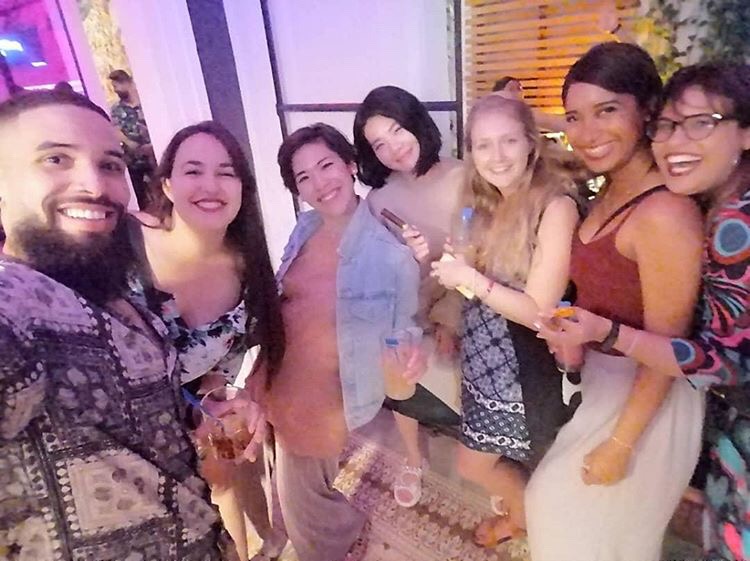
Cubans may not live under the best government but that doesn’t stop them enjoying life. Cubans love to drink, dance and socialise. Many are loud, passionate and infectious. Perhaps the Cuban spirit is stronger for everything they’ve had to overcome.
A learning curve
I can’t deny things about Cuba were challenging but there was a lot I really enjoyed. One of the main things was the learning curve: truly seeing how life works under a completely different model of society. Aside from that, I loved Havana. I spent days wandering around, chatting to friendly locals in parks, sharing my peso pizzas with street cats and marvelling at the architecture and retro cars. And riding in one!
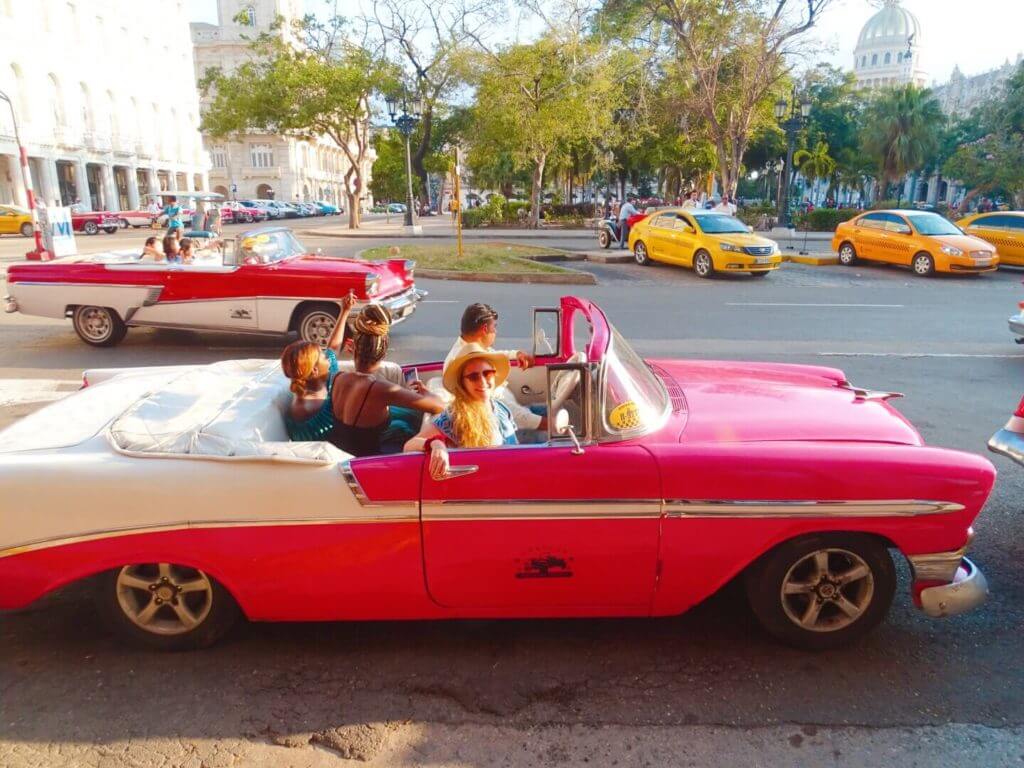
Foodies wondering what Cuba is like may be disappointed! While there were plenty of things I liked about Cuba, I wasn’t blown away by the food. Of course, that could be partly because I was coming from Mexico! There were a few dishes I enjoyed like ropa veija, a dish of pulled steak with rice, black beans and fried plantain. But for the most part, the nicer dishes with fresh ingredients were served in more touristic and pricey restaurants. Due to the ration system that many locals live with, ingredients are hard to come by. There’s a lot of preserved food like spam. During the evenings I wanted to grab something quick and affordable, I could only find limp hot dogs or ‘peso pizza’ topped with can-style meat or tuna. I hope for locals’ sake they’re able to cook better meals at home.

While the food wasn’t my favourite, the cocktails were! Cocktails in Cuba flow freely and are very affordable. I often drank pina coladas for $2 or less. Not only were they cheap but they were absolutely delicious.
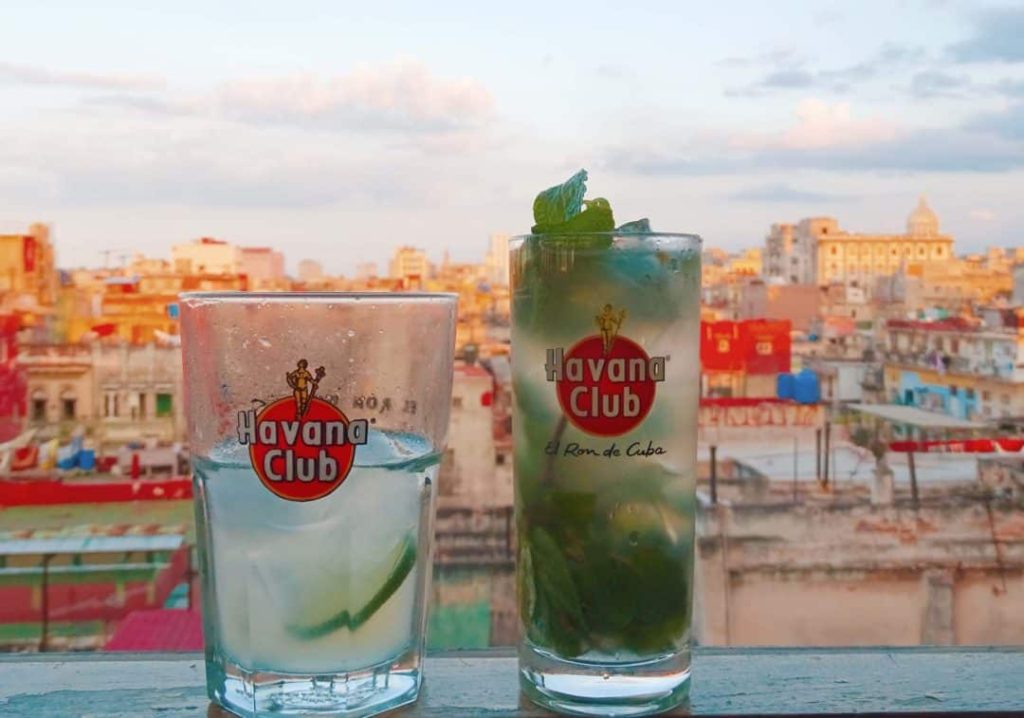
Cuba is the home to the mojito and the daiquiri so I loved going to the Havana bars that invented them: La Bodeguita del Medio for mojitos and El Floridita for the original daiquiri, invented by the hotel bartender during US prohibition when many Americans would visit Cuba.
Life is not convenient
I learnt that life under Cuba’s version of communism can be hard. While it’s the least of many people’s problems, I couldn’t help but marvel at the lack of convenience. Booking a bus across the country was so complicated on a clunky website that needed your passport that I took taxis instead. There were no taxi apps since American companies are banned. You can’t get a takeaway or visit a supermarket. You can barely buy conditioner or toothpaste due to trade sanctions with the rest of the world. It made me realise how accustomed I am to convenience. Whether it’s dinner, a cab or a gift for a friend, usually when I want something, I reach for my phone and order it. In Cuba, there are no shortcuts.
I was also surprised by the cost of visiting Cuba . The worst bit was getting around. Including the return ride from the airport and a return trip to Trinidad (a smaller city in Cuba) from Havana, I spent $160 on government taxis, similar to what I’d live on in Mexico for a week! Unless you live on peso food, which isn’t tasty or nutritious, you can also spend a lot on food and drink in Cuba. I battled quite hard to find local dinners taking CUP rather than the tourist restaurants in Old Havana which only took CUC and weren’t overly different in price from eating out in the UK.
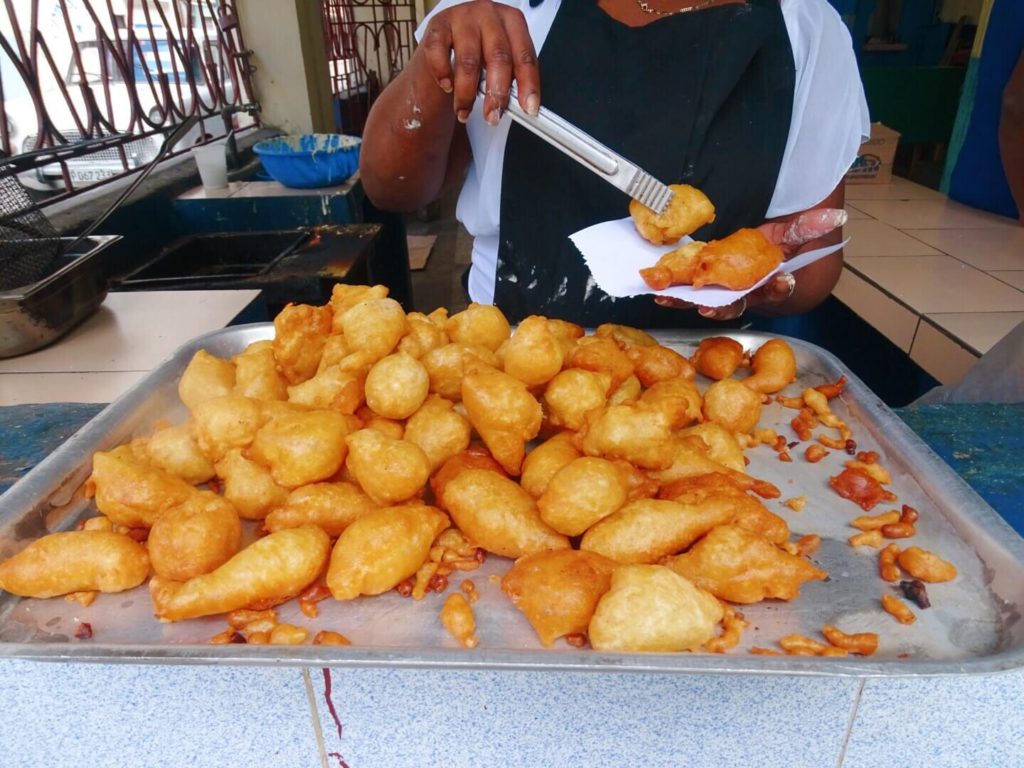
Leaving Cuba
As I left Cuba, I knew I wouldn’t forget my trip quickly. It wasn’t like anywhere I’d been before, probably because Cuba isn’t like anywhere else. For that alone, I’m so glad I got to visit and learn about Cuba first-hand, rather than from a book. But I can’t lie: I was happy on the flight from Havana to Mexico City. I was going to call an Uber and it would be a fifth of the price of a Havana taxi. Then, I would order takeaway food to my bed, browsing my options. I was going to have a feast and it would be cheap and there would be no canned ham. I was not going to be harassed on the streets. THERE WOULD BE CHEESE AND FRESH VEGGIES. THERE WOULD BE INTERNET. Leaving Cuba, I couldn’t wait for things to be available at my fingertips. Convenience. The freedom to browse and make a choice for myself. Communism is clearly not the life for me… But capitalism will destroy Planet Earth in even less time. What are we gunna do?
Liked this? Pin it for later!
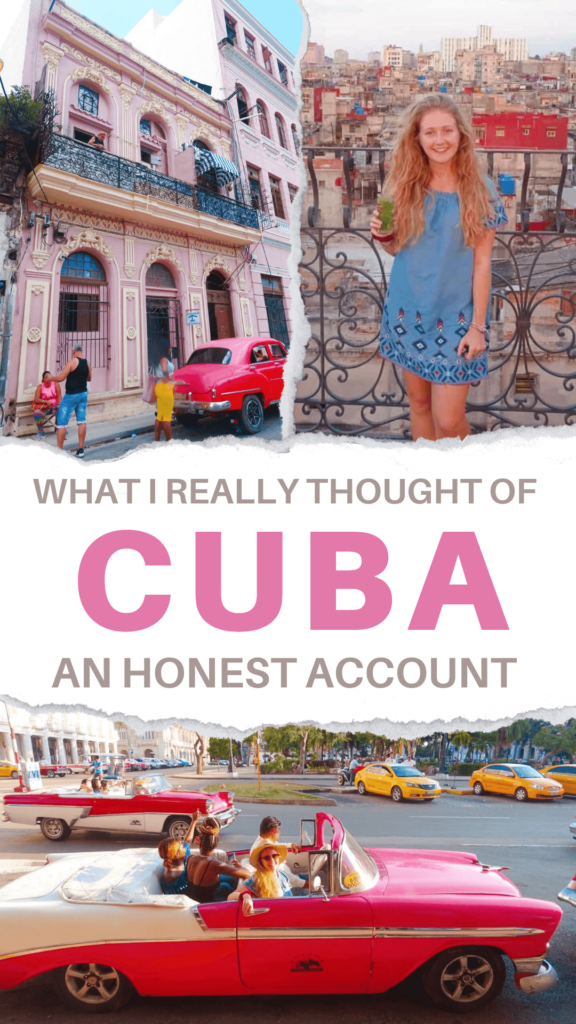
I hope you have a better idea of what Cuba is like to visit and whether you should take a trip!
Rose is a solo traveller from the UK who has been on the road since 2015. She wants to show other women that solo travel isn't scary and doesn't have to be expensive! Rose has lived in Mexico, Canada and all over Asia, seeking out food, bubble tea and street art wherever she goes!
8 thoughts on “ What I Really Thought of Cuba – My Honest Views ”
Dear Rose: Most of what you report is true. However, you have olly según the Cuban learning curve. You should have brought Euros to exchange. Next since you were traveling lite, you could have taken the bus like the cubans do from the airport to the main road Boyeros and take a machina(shared)and arrive at central Park in the Habana vieja by the Capital building for less than $2-. Taxis are to be avoided or share at the airport with luggage. Also of you don’t want all the attention from the cuban male, die your hair! Most latinos give “Rubios ” todo much attention!
Hi Jim. I considered Euros but thought I would might lose out in the exchange of Mexican Pesos – Euros – Cuban Pesos. Thanks for the bus tips, I’ll have to use them if I ever go back 🙂 However I won’t be dying my hair to appease men on a 10 day trip haha
Rosa, I’m a Canadian man in my 60s. I live in Havana in the winter because I love the people here, but you’re absolutely right, Cuba is not friendly to budget travel. The government wants to keep tourists in respets where they can squeeze them for foreign currency and not meet locals who will soon disillusion you about communism. Convenience is unhesrd of here. And the culture is,quite macho although recently the government has made efforts to encouage more respect for LGBTQ+ people, but that’s a,work in progress. As another commenter pointed out you are blonde and foreign making you a very attractive potential partner. If you’ve watched cuban music videos you’ll catch the pervasive gender stereotypes right away, but if you tell someone ‘no moleste me’/don’t bug me, they’ll back off. Because you were travelling on a budget you saw real Cuba and Cubans on your first outing. Good for you..Life here is not pleasant for Cubans and yet they persist in their joie de vivre with the charscteristic courage I love. But as you say Mexico is equally beautiful has more conveniences, and better food. I do find it more dangerous.
Hey Giles, thanks for your comment. You’re right: it isn’t budget-friendly, nor convenient and there aren’t great attitudes towards women due to the macho culture. I am glad to hear they are making efforts for LGBTQ+ people, however, and hope this continues! Saying all this, I am so glad I did get to see the real Cuba like you say… It’s truly a unique place and I’m glad I got to visit in Feb 2020 before the world went crazy. Ohh, Mexico is wonderful isn’t it. The food!!
Hi there, This is by far the best and most honest review I’ve read regarding Cuba. I’m due to travel out there for 2 weeks for my honeymoon (initially in Havana) May I ask 1) Who did you do the bar crawl with? 2) In your experience, are women harrassed less if they’re with a male? I have zero tolerance for this and fear I may lose my temper. 3) Any recommendations or things you wish you had avoided or done in Havana? Thank you.
Hi Matt glad you found my review & hope it can prepare you for your trip. The bar crawl was with Cuba Bar Hop; you can find them on Airbnb Experiences. Regarding harassment of women, I couldn’t say for sure as I was only by myself however I would presume it’s less if she’s with a man. Nothing major comes to mind for Havana, my favourite thing was just relaxing and wandering around soaking up the atmosphere so I’d say leave as much time for that as possible. Enjoy!
A really good and honest review – I’m currently here after cutting my 2 week trip down to just 1 week. As a group of 3 males we honestly didn’t find the people particularly friendly or helpful. Most the times many of the Cuban people didn’t seem to like us tourists for whatever reason. Often they seemed quite rude – some were ok but I wouldn’t say too friendly. They try to over charge us for everything they can possibly get away with and overall it was quite a disappointing trip. Sure there were some nice sights – cars, buildings and scenery etc but after a week we had, had enough. Varadero beach was ok but I wouldn’t say the best in the world like some people would have you believe. I certainly wouldn’t be rushing back here. Much better and more enjoyable places to visit.
Yeah I feel you! Hope you enjoy your next trip more 🙂
Leave a Reply Cancel reply
Your email address will not be published. Required fields are marked *
You can see how this popup was set up in our step-by-step guide: https://wppopupmaker.com/guides/auto-opening-announcement-popups/
Havana Tours & Vacations

In the charming Cuban capital of Havana, the colorful streets are filled with old-time American cars, Art Deco theatres, the wafts of cigar smoke, and laidback vibes. Feel the atmosphere of Buena Vista Social Club, brush up on Cuba’s political history at Museo de la Revolucion, or head to one of the city’s cool cafes or bohemian bars to say hola to a mojito. Strike out with these tours from Havana and see a greener side to the country in Vinales, pedal through sugar plantations in tropical Trinidad, discover Baracoa’s mountainous surrounds, and find your own rhythm in the birthplace of salsa.
Tours to Havana
The Cuban capital is all the things you imagined – the colors, the cars, the music, the crumbling buildings, the cigar smoke, the passion, and the life. These tours to Havana will take you to the heart of the iconic island, out into the countryside of Vinales, through the revolutionary history of the Bay of Pigs, adding in a slice of Caribbean Paris in Cienfuegos, and offering up the palm-fringed beaches of Trinidad along the way. Cuba is an island unlike any other, so get ready to move to its unique beat.
Let's create an exclusive trip for your group.
Tours from Havana
Havana tour reviews.
Filter by rating
Articles of Havana
How to avoid scams and Havana bad time in Cuba
6 essential spots you don’t want to miss in Cuba
Cuban revolution: 11 things I learned while cycling through Cuba
Come out and playa: 6 of the best beaches in Cuba
Havana have-tos: the experiences you can’t miss in Cuba’s capital
A love letter to Havana, a city that taught me so much
Top 6 colorful cities around the world

6+ Best Resorts in Havana Cuba (You’ll Love!)
Cuba is renowned as a beach vacation destination , but travelers might be surprised to learn that resorts in Havana are few and far between. Truthfully, you’ll have to travel about two hours east to Varadero before you reach some of the best beaches in Cuba (and the best resorts in Cuba ). However, there are a few city resorts in Havana worth considering for your stay.
Looking for an amenity-rich resort-like stay in Havana? As locals, we’ve checked out the best of the city’s resorts, from beautiful, modern hotels in Havana ‘s historic districts to beachfront properties with plenty of places to spread out. Read on for the best resorts in Havana, Cuba!

This post contains affiliate links that may reward me monetarily or otherwise when you use them to make qualifying purchases – at no cost to you. As an Amazon Associate, I earn from qualifying purchases. For more information, please read our disclosure policy .
Best Resorts in Havana, Cuba
Havana may not have any true beach resorts, but it has some luxurious, amenity-rich city resorts and hotels to choose from for your stay. These are our top favorite resorts in Havana, Cuba:
- Best Resort in Havana: Royalton Habana
- Best Resort in Old Havana: Iberostar Grand Packard
- Best Resort in Vedado: Hotel Grand Aston La Habana
Keep reading if you’re looking for even more options and our complete reviews (we’ve visited each hotel and resort on this list)! You’ll find everything from historic hotels in Havana that Fidel Castro called home after the Cuban Revolution (one of my favorite fun facts about Cuba !) to brand-new oceanfront hotels that put larger beach resorts to shame.
Cuba Travel 101
- Currency in Cuba: A Local’s Guide for Travelers
- How to Get Wifi in Cuba [Updated!]
- Is Cuba Safe? Updated Cuba Safety Guide
- Ultimate Cuba Travel Guide – A Local’s Advice for Travelers
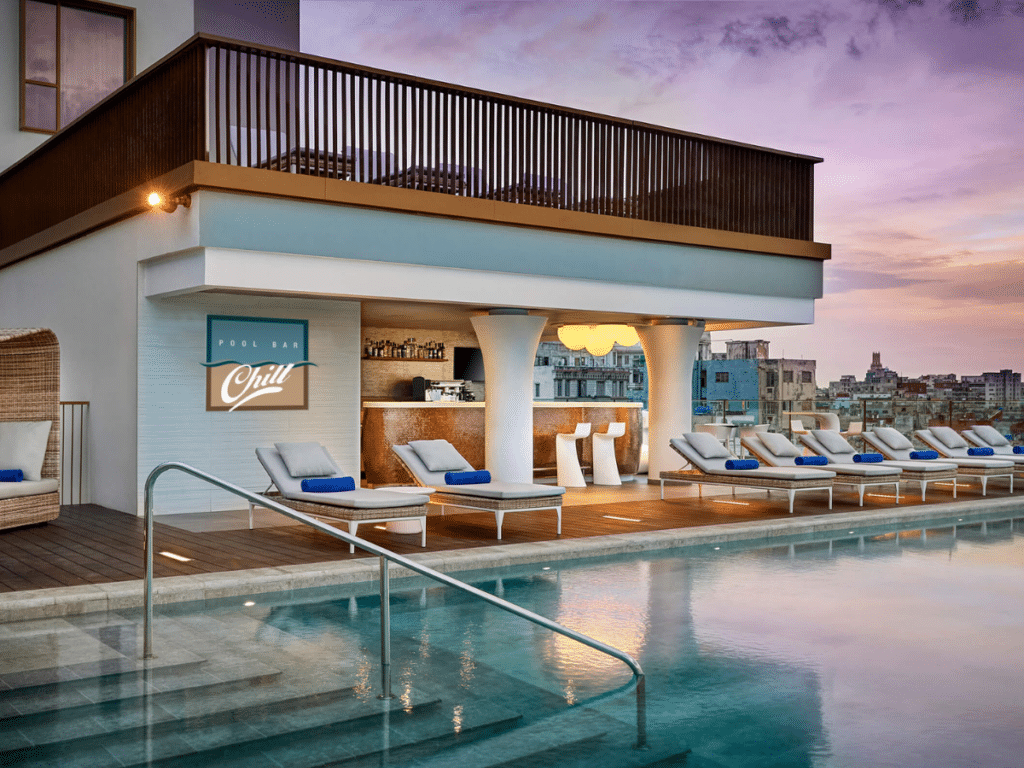
Havana Resorts
1. royalton habana.
Best Resort in Havana
Our top recommendation among the best resorts in Havana is Royalton Habana , hands down! This gorgeous, modern hotel is pure city luxury and offers tons of resort-like amenities from its privileged position along Havana’s iconic malecón sea wall.
Beautiful modern decor and thoughtful details throughout the Royalton Habana ‘s 250 rooms make a stay here a comfortable one, though the true star is the ocean views from every room. The resort also offers a luxurious spa (one of Havana’s best!) as well as a beauty parlor, on-site dining, and an incredible rooftop pool deck with a bar and eatery to enjoy the sweeping views over the city and the sea. It’s a popular destination even for those who aren’t staying here.
Reviews and Bookings: Royalton Habana
Havana Accommodation Guides
- Where to Stay in Havana, Cuba: Ultimate Guide!
- 15+ Best Hotels in Havana
- 6 + Best Resorts in Havana
- Best Casas Particulares in Old Havana

2. Iberostar Grand Packard
Best Resort in Old Havana
The Iberostar Grand Packard is our top pick among modern hotels in Havana , though with its excellent options for dining, its luxurious spa, and its beautiful pool with incredible ocean vistas, it also earns a spot on our list of the best resorts in Havana. Nestled between the winding streets of Old Havana and the city’s largest pedestrian thoroughfare, Paseo del Prado, it’s the best choice for a resort-like experience in an area perfect for exploring the city.
Rooms at the Iberostar Grand Packard are spacious and modern, yet comfortable, and many offer excellent views, overlooking either the ocean or the historic areas of the city. Excellent on-site dining options are also a highlight; make sure to enjoy a drink at sunset on the pool deck overlooking El Morro, Havana’s historic fortress across the harbor.
Reviews and Bookings: Iberostar Grand Packard
Travel Essential
Don’t think about traveling to Cuba without a good VPN (Virtual Private Network) . Using a VPN while connecting to the internet is an easy way to keep your personal information safe from hackers and trackers. We’ve used NordVPN for years and couldn’t recommend it more – it’s a must for safety online, especially in Cuba.

3. Hotel Grand Aston La Habana
Best Resort in Vedado
After its debut just over a year ago, the Hotel Grand Aston La Habana has quickly become a favorite choice for travelers looking for all the amenities of Havana resorts while hoping to enjoy the best of the lively yet storied neighborhood of Vedado. It’s one of our top recommendations among resorts in Havana, Cuba.
Rooms are quite large and offer stunning views over the city from the upper levels. The restaurant also has great on-site dining options. One of the highlights is the large oceanfront pool deck with a bar and eatery with plenty of loungers and sun beds. You’ll feel like you’re enjoying a proper beach getaway in Cuba while being within walking distance of all the best restaurants, shops, and attractions in Havana .
Reviews and Bookings: Hotel Grand Aston La Habana
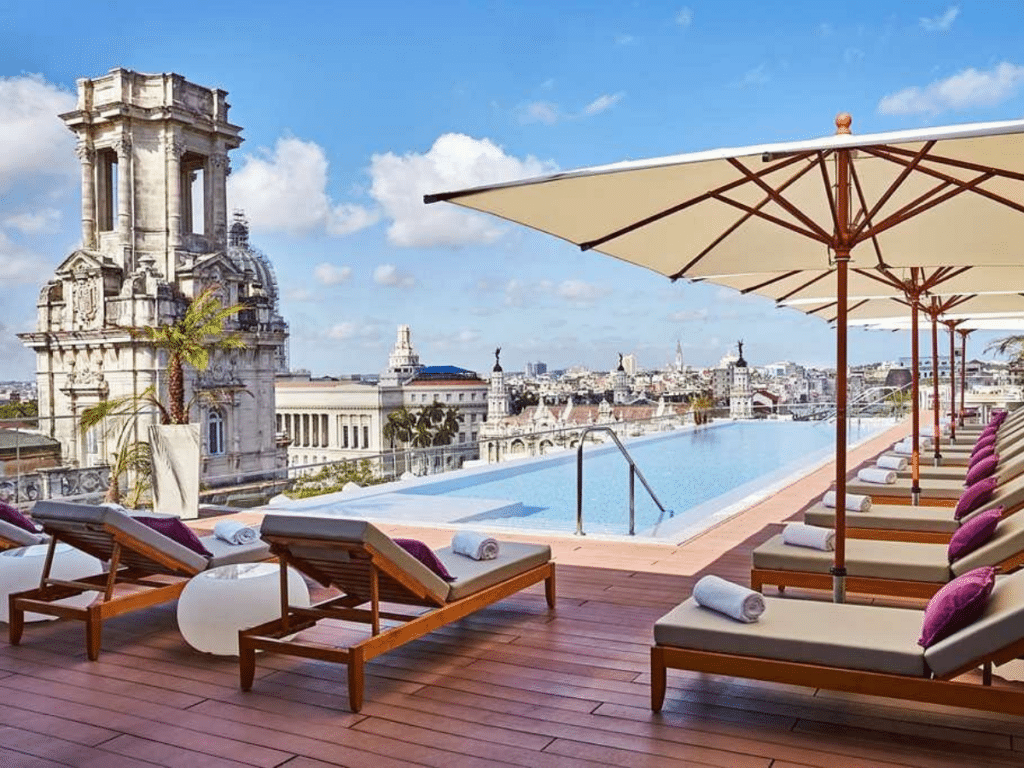
4. Gran Hotel Manzana Kempinski
The Gran Hotel Manzana Kempinski is one the best hotels in Old Havana and has a rich history: this building was once home to Havana’s first indoor shopping arcade, which visitors can still visit on the ground floor of the building. Now, the hotel is among the city’s best and an excellent choice for travelers looking for a resort in Havana.
This 246-room hotel has modern yet comfortable decor and some seriously cool amenities and spaces. The rooftop bar and restaurant offer stunning views over the city, making this a must-visit destination even for those who aren’t staying here, as is the lounge and cigar bar with a massive walk-in humidor on the second floor.
Gran Hotel Manzana Kempinski is part of the Kempinski group, known mostly throughout Europe for its impeccable service and elegance. If you’re headed to the beach after you complete your Havana itinerary , consider staying at Gran Hotel Manzana Kempinski’s sister resort in Cayo Guillermo – it’s considered the most luxurious resort in Cuba.
Reviews and Bookings: Gran Hotel Manzana Kempinski
Havana Beaches Guides
- 7 Best Beaches in Havana
- Playas del Este: A Guide to Havana’s Eastern Beaches
- 8 Best Day Trips from Havana
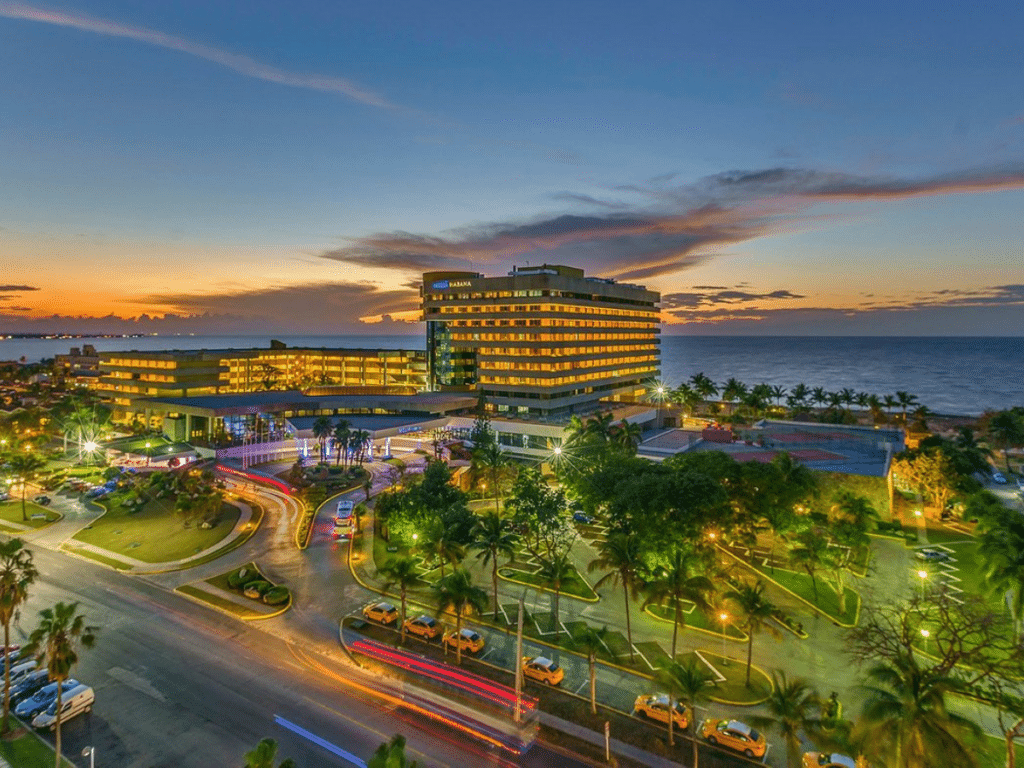
5. Melia Habana
The oceanfront Melia Habana has everything you could ever want from resorts in Havana Cuba, including amenities that put larger resorts in Cuba to shame. Multiple restaurants and buffets, five bars, a large pool deck with an area for the kids, and a large wellness spa with spa, sauna, and fitness center are just the start at this 397-room resort.
While the Melia Habana certainly has the feel of a true resort, more so than most other resorts in Havana Cuba, I generally don’t recommend it for most travelers due to its location: it’s located in residential, yet upscale, Miramar. While the hotel offers a free shuttle to Old Havana, the hotel just doesn’t offer much for those looking to explore Havana.
Truthfully, if you’re not looking to explore Havana, you’re better off heading to one of the impressive beach resorts of Varadero , where you’ll enjoy the same amenities but one of the best beaches in the Caribbean .
Reviews and Bookings: Melia Habana
Travel Insurance
Cuba requires that all travelers have proof of a comprehensive travel insurance policy in order to enter the country. Check out our guide to travel insurance for Cuba for more details. We recommend these brands for Cuba travel insurance:
- Visitors Coverage : Coverage for Cuba travel available to citizens of all countries, though not currently available to residents of New York and Maryland in the United States.
- Insubuy : Coverage for Cuba travel available to citizens of all countries and states of the United States.

6. Tryp Habana Libre
Tryp Habana Libre is one of the most storied hotels in Havana , the stuff of endless legend and myth, and among Havana’s most important landmarks.
Originally opened in 1958 as the Habana Hilton, the hotel became the headquarters of Fidel Castro upon the victory of the Cuban Revolution in 1959 – Castro famously lived in the hotel’s Continental Suite (room 2324) for three months . The hotel was renamed Habana Libre – or, “free Havana” – in 1960 when the revolutionary government nationalized the hotel.
While certain areas of the hotel could use some serious love and are overdue for a refurbishment, it still has a lot to offer travelers, and rooms are generally much more affordable than those at other Havana resorts on this list. Plus, the hotel is located on one of the most desirable corners in Havana – 23 y L in the very heart of Vedado, meaning your stay guarantees you one of the best places to stay in Havana to explore the city.
Reviews and Bookings: Tryp Habana Libre
- 40 Fun Facts About Havana (You Won’t Believe!)
- 45+ Best Things To Do in Havana
- Old Havana: Ultimate Traveler’s Guide
Can Americans Stay at Resorts in Havana?
Travelers from the United States might be surprised to learn that, for the most part, Americans can travel to Cuba easily , and quite normally.
However, policy changes implemented during the Trump administration mean that travelers from the United States are limited to where they can stay in Cuba. ALL of the resorts on this list are included in the list of hotels that American travelers CAN NOT visit while staying in Cuba.
Instead, opt for one of the many smaller, independently owned and operated hotels in Havana . These are some of our favorite spots in the city:
- Residencia Santa Clara in Old Havana
- La Reserva Vedado in Vedado
- La Rosa de Ortega in 10 de Octobre, one of Havana’s more residential, “local” neighborhoods
For a full summary of hotels that American travelers should avoid while traveling in Cuba, check out the U.S. Department of State website for an updated list.
Guides for American Travelers to Cuba
- Can Americans Travel to Cuba?
- Is Cuba Safe for American Travelers?
- Support for the Cuban People: Legal Travel Guide to Cuba

Carley Rojas Avila
Carley Rojas Avila is a bilingual travel writer, editor, content marketer, and the founder of the digital travel publications Home to Havana and Explorers Away. She is a serial expat and traveler, having visited 40+ countries and counting. Carley has written for publications like Travel + Leisure, MSN, Associated Press, Weather Channel, Wealth of Geeks, and more. Find her front row at a Bad Bunny concert, befriending street cats, and taste-testing every pizza in Havana.
Best Havana Tour Companies
Search 45 Havana tour operators and travel companies, with 94 reviews.

Intrepid Travel
Health Safety +
Featured Havana Trips

Travel Talk

G Adventures

Audley Travel
Sign in to see which companies give additional savings to Travelstride Members (it’s free)

Zegrahm Expeditions

Road Scholar

Access Trips

Gate 1 Travel

National Geographic Expeditions

Classic Journeys

45 match your criteria (1 - 20 shown)

View Havana trips
Plan your Havana trip
Havana Reviews & Ratings
Incredible tour leader..
I thoroughly enjoyed the approach of our tour leader, Ivan. He was warm, friendly, professional, knowledgeable and looked after every aspect of our trip. He is an in...
Superb trip!
The organization and help I received pre trip from Tracy Hopkins was excellent and reassured me that I would be well looked after - a consideration as I was travelin...
A truly amazing trip of a fascinating island.
Our tour guide Ivan organized everything extremely we...
I thoroughly enjoyed the approach of our
I have now been on 2 intrepid trips..
I have now been on 2 Intrepid trips. The prospectus of the tours tells y...
See all Havana reviews
Related Trips and Tours
Trip planning.
Top Cuba Tour Operators for Americans
:max_bytes(150000):strip_icc():format(webp)/bobislands-56a3911f3df78cf7727dfc3b.jpg)
Sir Francis Canker Photography/Getty Images
For the first time since the 1950s, Americans are allowed to travel legally to Cuba , but it's still not a simple process if you want to book a flight and hotel in Havana or Varadero, for both bureaucratic and supply related reasons. That's why Americans still book tours through companies that have won special approval from the U.S. State Department to run cultural-exchange trips to Cuba .
Going on a group tour means you're guaranteed not to run afoul of the still-sticky rules governing Cuba travel , which require that your trip focuses on cultural exchanges, not tourism (in other words, you should be meeting Cuban people and learning about their culture, not lying on the beach all day). Each of these companies has crafted tours full of cultural experiences that you'd be unlikely to arrange all on your own. Plus, you'll be traveling with companies that have had years of experience operating in Cuba and with guides who are intimately familiar with this fascinating country and its people.
Note that all Cuba tours are fully escorted, include all lodging and meals, and have a mandatory overnight in Miami for pre-trip trip orientation.
Insight Cuba
Insight Cuba is based in New Rochelle, N.Y., and has been bringing Americans to Cuba since 2000. Their tour schedule is especially diverse, with programs focused on music, baseball, and the Havana Marathon as well as tours that get visitors outside Havana to explore the still mostly undiscovered countryside. Their 4-day Weekend in Havana tour is a rare opportunity for a quick Cuban getaway.
Cuba Explorer
Canadians have been traveling to Cuba legally for decades— an experience that benefits this British Columbia based agency that also is licensed to bring U.S. citizens to Cuba. Programs include basic introductory tours, an Arts and Culture Tour to Havana, Trinidad and Cienfuegos, and a trip to the annual Havana International Jazz Festival.
Classic Journeys
Classic Journeys operates tours all over the world and has added Cuba to its offerings. Programs include a seven-night walking tour, a family-oriented program designed with children and teens in mind, and a Havana weekend tour that includes stops at Ernest Hemingway's house, salsa lessons, and a stay in Old Havana.
Friendly Planet Tours
In addition to the typical Havana and Cuba introductory tours, Friendly Planet offers an itinerary that includes a stop in Varadero, the beach destination most visited by non-U.S. travelers.
International Expeditions
This ecotourism company specializing in nature travel offers two Cuba tours: one focused on Havana and the city of Trinidad and a longer journey that includes visits to the wetlands of the Zapata Peninsula, a boat trip through limestone caves off the coast of Vinales, and a stop at a farm that raises tobacco for Cuba's famous cigars.
YMT Vacations
YMT Vacations is an international travel company that offers a single 8-night Cuba itinerary that includes stops in Old Havana, the historic towns of Santa Clara and Remedios, a tobacco farm, and the usual cultural, musical and artistic performances and visits required under the "support for the Cuban people" travel rules.
Central Holidays
Another legal Cuba travel pioneer, Central Holidays offers a 7-night "Havana: Then and Now" tour and a 9-day program that takes in Havana and the less-traveled historic cities of Camaguey, Trinidad, and Cienfuegos.
In Touch Travel Services
In Touch offers four Cuba tours with some interesting twists, including programs focusing on the island's Spanish colonial history, Afro Cuban culture and music, and a rare chance to visit the east coast towns of Guantanamo and Baracoa.
Cuba is for seniors, too! ElderTrek's comprehensive, 13-day tour of Cuba takes in Havana, the Sierra del Rosario Biosphere Reserve, Cienfuegos, Trinidad, the history of the Cuban revolution in Santa Clara, Afro Cuban music, and more.
Collette Tours
New England based Collette Tours, one of the nation's biggest tour companies, runs a Rediscover Cuba tour several times a year; the itinerary includes visits to Havana and Trinidad, a steam train ride to a sugar plantation, a choral concert, and more.
Cubas Capital City of Havana
Cuba Guide: Planning Your Trip
Licensed Cuba Travel Providers
48 Hours in Havana: The Ultimate Itinerary
Top Travel Destinations and Attractions in Cuba
Gay and Lesbian Friendly Destinations in the Caribbean
How to Travel to Cuba If You Are an American
The 5 Best Day Trips from Havana
A Guide to Public Transport in Cuba
One Perfect Week in Cuba
The Top 17 Things to Do in Cuba
The 27 Best Things To Do in Miami
What Americans Traveling to Cuba Need to Know
Cuba Travel Restrictions and Warnings: What You Need to Know
The Best Women-Only Adventure Travel Companies
How to Find an Ethical, Authentic Food Tour
Hotel Vedado 500
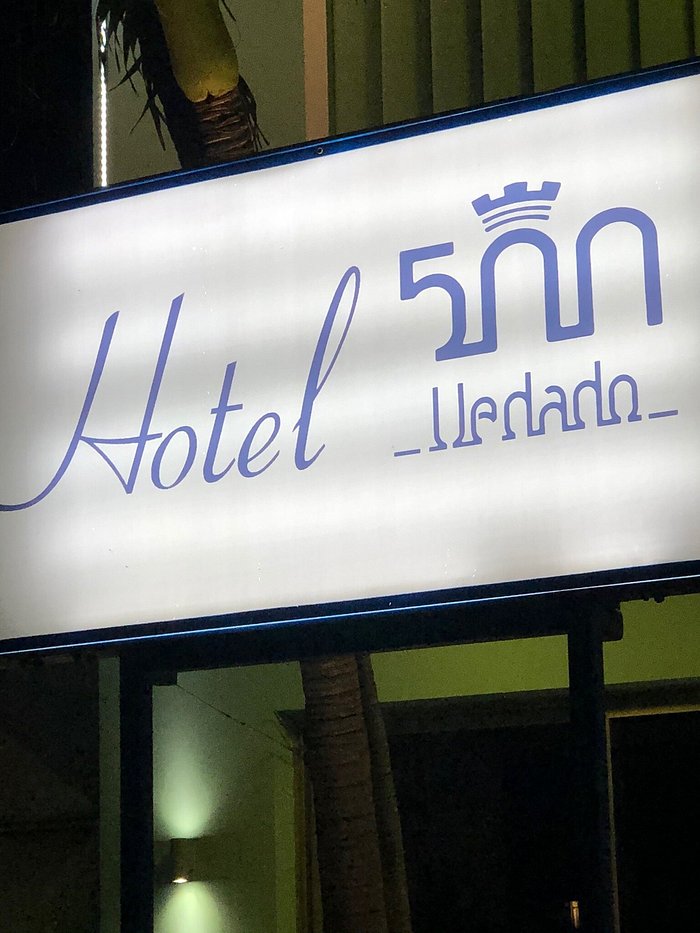
View prices for your travel dates
- Excellent 14
- Very Good 1
- All languages ( 17 )
- Spanish ( 8 )
- English ( 6 )
- Russian ( 3 )
" select another hotel "
Own or manage this property? Claim your listing for free to respond to reviews, update your profile and much more.
HOTEL VEDADO 500 - Updated 2024 Prices & Reviews (Havana, Cuba)

IMAGES
VIDEO
COMMENTS
Ensure your trip to Havana goes smoothly with our top 20 things to know before you go. 1. Bring proof of insurance. Despite Cuba's extensive state healthcare system, visitors are required to have medical insurance to enter Cuba, and you'll need to bring a digital or printed proof of your policy. Random checks are conducted at the airport; if ...
About Havana. A city trapped in time, Havana captures the imagination like no other. Faded glamour meets careful colonial-era reconstruction with a backdrop of irresistible color. Walk El Malecón, the walkway bordering the ocean; visit Old Havana and the Catedral de San Cristóbal; and listen for salsa music, open-air bazaars and parties that ...
Best Months to Visit. The best time to visit Cuba is between January and February. The island's location in the Caribbean affords warm temperatures year-round, with the average lows in Havana ...
Late November or December through April or May tends to be the best time to visit Havana for nice weather. High Season: December - April. Shoulder Season: May - June, October - November. Low Season: July - September. However, December through April also correspond with the high season of travel.
About Havana. A city trapped in time, Havana captures the imagination like no other. Faded glamour meets careful colonial-era reconstruction with a backdrop of irresistible colour. Walk El Malecón, the walkway bordering the ocean; visit Old Havana and the Catedral de San Cristóbal; and listen for salsa music, open-air bazaars and parties that ...
Reviews and Bookings: ... Carley Rojas Avila is a bilingual travel writer, editor, content marketer, and the founder of the digital travel publications Home to Havana and Explorers Away. She is a serial expat and traveler, having visited 40+ countries and counting. Carley has written for publications like Travel + Leisure, MSN, Associated Press ...
Are you planning to visit Havana, Cuba in 2024? Find out all you need to know before you go with Tripadvisor, the best source of travel tips, reviews, and deals. Explore Havana's hotels, attractions, and restaurants, and discover the vibrant culture and history of this Caribbean city.
The best part of travel is always the people and culture. So often, we have more in common than not and the process of discovery is enjoyable. Our trip to Cuba organized by Stefano at HC Tours Havana was everything we hoped for and more. By far, the most enjoyable was spending 11 days with our amazing guide Beatrice and driver Eddy.
Marvel at the colonial architecture in Havana, enjoy a ride in a Classic Car, explore the forests close to Trinidad, and relax on white sandy beaches of Cayo Levisa - this trip packs it all into one itinerary. view trip ⤍. 5 days / from1007 USD. Bike Cuba.
There was so much excitement when booking my trip to Havana, but there was also a little bit of uncertainty.The embargo, that dates back to the 1960s, made most travel to Cuba by Americans off-limits. It hasn't been long since Cuban and American relations have improved and the embargo has loosened, which allows United State citizens to travel to the country with less regulations.
43 reviews. #15 of 64 Outdoor Activities in Havana. Multi-day ToursCultural ToursHistorical & Heritage ToursEco Tours. Closed now. 9:00 AM - 5:00 PM. Write a review. See all photos. About. Cuba Explorer has helped thousands of Americans travel to Cuba legally since 1997.
Good (835 reviews) SWISS. Good (910 reviews) British Airways. Good (4,305 reviews) Delta. Good (4,579 reviews) Turkish Airlines. Good (2,263 reviews) Air France. Good (961 reviews) Iberia. ... Havana Travel Guide - View the KAYAK Havana city guide for the best Havana travel tips. To help you organize your Havana trip ideas, this Havana visitors ...
Courtesy of Iberostar Grand Packard Havana Hotels 1. Iberostar Grand Packard. Best Modern Luxury Hotel in Havana. A number of new, modern hotels have opened in the heart of Havana within the last decade, and Iberostar Grand Packard is our top pick among them. Wedged between the Malecón sea wall and one of the city's most beloved pedestrian thoroughfares, the Paseo del Prado, this gorgeous ...
Trip customizable. 7 day city sightseeing tour in Cuba, visiting Havana, Vinales and Varadero. Read More. Tour Type Independent Tour. Activities City sightseeing & Honeymoon. Accommodation Hotel & Home-stay. Transport Bus, Private Vehicle & Taxi. Age Range 1-79 yrs. Operated in English, Spanish.
Tricky things about Cuba. 1. You can't bring Cuban money in or out of Cuba. 2. Many ATMs are out of cash. 3. US bank cards don't work and there's a 10% fee added to exchange of US dollars. 4. Due to economic sanctions, you can't buy many day-to-day products like shampoo.
Havana Tours & Vacations. In the charming Cuban capital of Havana, the colorful streets are filled with old-time American cars, Art Deco theatres, the wafts of cigar smoke, and laidback vibes. Feel the atmosphere of Buena Vista Social Club, brush up on Cuba's political history at Museo de la Revolucion, or head to one of the city's cool ...
Courtesy of Royalton Habana Havana Resorts 1. Royalton Habana. Best Resort in Havana. Our top recommendation among the best resorts in Havana is Royalton Habana, hands down!This gorgeous, modern hotel is pure city luxury and offers tons of resort-like amenities from its privileged position along Havana's iconic malecón sea wall.. Beautiful modern decor and thoughtful details throughout the ...
Havana Tours & Travel Packages 2024/2025. 26 Havana trips. Compare tour itineraries from 45 tour companies. 87 reviews. 4.8/5 avg rating.
For details, tap here. 1. Cubaoutings. And the Havana day tour, Tropicana show, and Vin~ales tours are awesome (pics uploaded) Viva and thanks always Cubaou... 2. VC Tours. Excellent private day tour with Luis and Marian in a gorgeous Chevrolet Impala convertible. 3.
Follow. Compare. View trips. 4.8 Avg. Rating for Havana Trips|43,612 Reviews for Havana Trips. All G Adventures company reviews. Why we love them. They've partnered with well-known names like National Geographic and the Jane Goodall Institute to offer unique experiences unavailable elsewhere. Connect with an Expert.
For the first time since the 1950s, Americans are allowed to travel legally to Cuba, but it's still not a simple process if you want to book a flight and hotel in Havana or Varadero, for both bureaucratic and supply related reasons.That's why Americans still book tours through companies that have won special approval from the U.S. State Department to run cultural-exchange trips to Cuba.
Book Hotel Vedado 500, Havana on Tripadvisor: See 17 traveler reviews, 3 candid photos, and great deals for Hotel Vedado 500, ranked #257 of 669 hotels in Havana and rated 4 of 5 at Tripadvisor. ... The information on the travel site says there is an elevator, (see screenshot attached). There is NO elevator in a four-floor hotel. If it had an ...